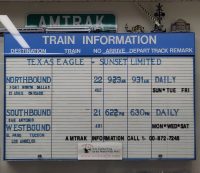 Welcome to another instalment of Brian’s Travel Spot. You join me in Austin, Texas, at the start of a week-long train trip across America (although the last leg is by coach) that will see me reach Portland, Maine, just in time for Thanksgiving. My journey is spread over four days, going via New Orleans (where I’m spending the weekend) and Washington DC (where I’ll spend a day).
Welcome to another instalment of Brian’s Travel Spot. You join me in Austin, Texas, at the start of a week-long train trip across America (although the last leg is by coach) that will see me reach Portland, Maine, just in time for Thanksgiving. My journey is spread over four days, going via New Orleans (where I’m spending the weekend) and Washington DC (where I’ll spend a day).
This Travel Spot covers the first leg of the journey, travelling on Amtrak Train No. 21, Texas Eagle, which runs daily between Chicago and San Antonio. However, I was only onboard from the second to last stop, Austin, my coach class ticket (booked six weeks in advance) costing me the princely sum of $6.
I’d been in Austin for the previous six days, having flown out from London for work. As soon as my meeting ended on Thursday afternoon, I headed to the station, stopping only for a pour-over at Merit Coffee on W 3rd Street, a convenient 10-minute stroll from the station (or so I thought). Then I carried on to the station, arriving in plenty of time for my 18:30 departure. Except, as you will see, my train was somewhat late.
As usual with my Travel Spots, I’ve split this post into the following secttions:
- My week in Austin
- Getting to Austin Station
- The Texas Eagle
- Amtrak’s Combined Café/Dining Car
- Arriving in San Antonio
Let’s start with some details of the trip, as well as some thoughts about Austin, which you can read about after the gallery.
I’d heard a lot about Austin and all of it was good. Fortunately, it lived up to the billing. I stayed down by the river, where I was treated to some spectacular sunsets behind the wooded hills on the opposite bank. The only downside was I-35, the main north-south interstate which, in typical American fashion, cuts right through the heart of the city before crossing the river close to my hotel. Although the double glazing dealt with the sound, the four separate bridges, each carrying four lanes of traffic, which took I-35 and its local feeder roads over the river, were a visual blight.
I spent the weekend exploring Austin’s speciality coffee scene, sticking to the east side (east of I-35), where I had a very pleasant time wandering around a series of low-rise neighbourhoods drinking some fantastic coffee in the warm autumn sunshine. I’ll post some Coffee Spots in due course, but in the meantime, you can check out Bex’s Austin Speciality Coffee Guide from 2018. Everywhere I visited was on Bex’s list.
During the week, I was working in downtown Austin (to the west of I-35), which meant that I had a very pleasant 25-minute stroll along Austin’s riverwalk each morning/evening. I did call into a couple of city-centre coffee shops, notably Houndstooth Coffee (another one from Bex’s list), which was a block from the hotel where we were meeting, but it was perpetually busy, so I never had the chance to write it up. Then it was Thursday evening and time to head to the station.
I had options when it came to getting to Portland. The quickest was to fly, but I dislike flying domestically in America, plus it would have involved two flights, so double the pain. Instead, I turned to my favourite method of long-distance travel in America: Amtrak. I could either go via Chicago, taking the Texas Eagle north on Friday morning, spending the weekend in Chicago (which was appealing) before going east via Albany to Boston.
However, knowing that work would likely send me back to Chicago at some point next year, I was swayed by the prospect of a weekend in New Orleans. This meant getting on the same train, the Texas Eagle, but going in the opposite direction (south) for two stops to San Antonio, where the train terminates (although on Monday, Wednesday and Saturday, the Texas Eagle joins the Sunset Limited from New Orleans, the two trains carrying on to Los Angeles).
I was scheduled to arrive in San Antonio at 21:55, where I would spend the night before catching the Sunset Limited in the opposite direction, travelling all the way to New Orleans. This departed at the very unreasonable hour of 06:25, but that’s for another Travel Spot.
You can see how I got on catching the Texas Eagle after the gallery.
The Texas Eagle was scheduled to leave at 18:30, so I left Merit Coffee, where I’d been having one last pour-over, at 18:00. Google Maps assured me that it was less than ten minutes’ walk to the station, with a simple route that took me along 3rd Street. This runs parallel to the train line, with the station on the other side of the tracks. The only problem was that the tracks were on the other side of a tall, chain link fence and the cut through that Google Maps was adamant would take me across the tracks to the station simply wasn’t there.
By the time I realised my (Google’s?) error, I had to retrace myself steps then head north a block (away from the station), which allowed me to drop down under both 3rd Street and the train tracks, walking alongside the busy Lamar Boulevard. This took me to the main (road) entrance to the station, where it was a short hike back up to the train tracks. In all, the diversion added 10 minutes to my journey, so I still had plenty of time.
The Texas Eagle had left Chicago at 13:45 the day before and was due to arrive in Austin at 18:22, departing there at 18:30. During the day, the Amtrak app had been showing the train as on time, which I was pleasantly surprised by. Even better, it was estimated to arrive 1¼ hours early at San Antonio, pulling in at 20:40. If all went well, this would be a major bonus given the short turnaround I had before my train the following morning. Clearly the timetable had some padding built into it!
Unfortunately, I arrived at the station to find that the train was delayed by at least 30 minutes. A long freight train had already gone through, heading north on the single track. I suspect that our train had had to wait for that to clear the section before it could come south. Unfortunately, the next train down the line was another freight train, this time heading south, which trundled slowly through the station, taking eight minutes in all from the first of the three locomotives to the last of the wagons.
Each time I looked, our train was delayed by another 10 minutes, so I stopped looking in the end. The Texas Eagle eventually arrived at 19:25, over an hour late. To make matters worse, we then had the usual Amtrak boarding inefficiencies as we waited around for everyone to get off before queuing to see a man who checked our names off a list. He then sent us to the relevant carriage, where we queued to actually get on the train, another member of staff handing out seat assignments at the door.
With that rigmarole out of the way, I got settled into my seat, but it would be another five minutes before we eventually pulled out of Austin at 19:40, an hour and 10 minutes behind schedule.
Before I tell you about the journey into San Antonio, you can see what I made of the Texas Eagle after the gallery.
The Texas Eagle is small by Amtrak standards, particularly for its long-distance services west of the Mississippi, where Amtrak uses its Superliner double-decker rolling stock. Typically, these are hauled by a pair of its massive P42DC diesel locomotives, so the Texas Eagle stands out by only having a solitary P42DC at the front, followed by just four coaches, a sleeping car, a combined café/dining car and then two coach class cars, which is where I was, seated in the first of the two.
If you’ve never travelled on Amtrak’s Superliners, then you’re in for a treat. The rolling stock is pretty old and is in the process of being refurbished and/or replaced, but in terms of space, they can’t be beaten. The bulk of the seating is upstairs, arranged in pairs of seats on either side of a wide, central aisle, with broad luggage racks running above the seats on each side. In total, the upper deck has 62 seats, which all face forwards. In case you wonder how Amtrak manages that, they can pivot 180° and are rotated at the end of the journey to face the other way for the return leg.
Amtrak is known for its spacious seats, with the Superliners leading the way. At 6’2”, I can stretch my legs right out and not quite touch the seat in front. There’s also a decent amount of recline and an extendable footrest, so the seat can be turned into a semi-reclining couch. Best of all, because of the space between the seats, even at full recline, you’re not encroaching on the space of the person behind you.
There’s a fold-down table which actually pivots on two metal arms from the base of the seat, a clever design which means that the position of the table isn’t dependent on whether the seat in front is reclined. The table’s big enough for my (admittedly small) laptop and can be pulled forward by an amount equivalent to its own depth, which is essential given how far away the seat in front is! Another bonus is that if you don’t pull the table forward, you can get in and out of the seat without having to put the table away. Finally, there’s a pair of power outlets under the window, level with the tables, although on the trains west of the Mississippi, there’s no Wifi.
The main downside with the Superliners is getting up and down the stairs which can be quite vicious, particularly given how much these trains can sway when the train is in motion. The stairs are narrow with two 90° turns, on a par with the stairs on a typical double-decker bus in the UK. You enter downstairs, where you’ll find a generous five toilets per car, as well as some big luggage racks for larger items that you don’t want to/can’t haul up the stairs. One of the two cars also has a small downstairs seating area, consisting of just 12 seats, which is usually reserved for passengers with mobility issues.
In the other car, this downstairs seating area has been replaced by a baggage area, although access is staff-only. Amtrak offers a baggage checking service on its long-distance trains, allowing you to drop your bags off at the station, airline style, then collect them at the other end. Typically, the checked bags will go in a dedicated baggage car, but since the Texas Eagle has no separate baggage car, checked bags go in this downstairs baggage area. located in the first coach class car.
Having travelled by coach class on the Superliner a few times before, this was all fairly familiar to me. However, the Texas Eagle had one surprise up its sleeve, a combined café/dining car which I’d not seen before.
You can see what I made of it after the gallery.
I’ve written about my love of Amtrak’s dining cars and my sadness at their demise on routes east of the Mississippi, where they were withdrawn by Amtrak in the year before the COVID-19 pandemic. Fortunately, the dining cars survived on routes west of the Mississippi, which are served by the Superliner rolling stock and tend to ne longer in duration than their eastern cousins. However, the COVID-19 pandemic struck another blow to communal dining, one which Amtrak has been slow to recover from.
A case in point is the Texas Eagle. Rather than have the traditional dining car along with the equally loved lounge car (which has an observation deck upstairs and a café downstairs), the Texas Eagle has a combined café/dining car. The front half of this is like a traditional dining car, but is reserved exclusively for the sleeping car passengers, while the rear half is a café car, where coach class can get their food. There’s limited communal seating here, consisting of just four tables, two traditional four-person ones, with a pair of seats either side of the table and two more which are lounge style. These have their tables parallel to the windows, the seating arranged in a C-shape. You might be able to get five or six people at one of these tables if you all squeeze up, but the majority will be sitting with their backs to the windows, so I can’t say that I’m a fan.
This was the first time that I had encountered one of the combined café/dining cars. After an explanation of how they worked from the café car attendant, I made the mistake of suggesting that they made sense for a smaller train like the Texas Eagle, where there was only one sleeping car and two coach class cars. However, my attendant quickly put me right on that. I got the impression that they were universally loathed by the staff since it means that two people are now doing work that was once covered by four staff. I was also told that the funding was supposed to be in place for the return of separate dining and café cars, but for some reason they had not yet turned up.
The café car part of the combined café/dining car offers Amtrak’s standard café car menu, available across almost the entire network. This includes an all-day breakfast selection, a couple of (meat-based) sandwiches, two salads and a variety of hot food. There’s also a range of sweet and savoury snacks. All of the food is pre-packaged (so no substitutions) and anything hot is warmed up by microwave. Finally, if you’re looking for something to drink, Amtrak has hot drinks (Starbucks tea and coffee), a range of soft drinks, plus a surprisingly good selection of wine, beer, spirits and cocktails.
I’d always planned on eating on the train, although I’d been hoping for a full meal in the dining car. Instead, I had one of the salads (the Asian Noodle Bowl) and a Blue Corn Veggie Tamale, unintentionally selecting the two vegan options on the menu (excluding snacks). I could have eaten these in the café car, which I had to myself, but instead headed back to my seat where I enjoyed the Asian Noodle Bowl, although the less said about the tamale the better. Maybe tamales aren’t for me, but I just found it rather bland and boring. In contrast, the noodle bowl was an interesting mix of flavours and textures.
With dinner out of the way, you can see how the journey went after the gallery.
I suspect that the most interesting part of the journey, scenery-wise, is the section immediately south of Austin, although even if the train had left on time, I’d have done the whole journey in the dark. As it was, I had my dinner before settling down to enjoy the journey. As an aside, the café car closes after San Marcos, the penultimate stop for the Texas Eagle, where the train is scheduled to arrive at 19:15, although if it’s running really late, the café car will close at 22:00, regardless of how far the train still has to go.
Although we had left Austin at 19:40, an hour and 10 minutes behind schedule, such was the padding built into the timetable that we should still have been able to arrive in San Antonio on time. However, we were dogged by delays, starting with being stuck behind the freight train that had come through Austin station before the Texas Eagle. It was only when we reached San Marcos, which is almost halfway between Austin and San Antonio, that we were able to get past it.
By then it was 20:45 and we were more than 1½ hours late, the 45-minute scheduled journey between Austin and San Marcos having taken just over an hour thanks to the freight train. Even so, since we were nearly halfway there, you would think that we’d be able to make it to San Antonio on time, but it was not to be.
First of all, we were held up outside New Braunfels for about 10 minutes to wait for another freight train, at which point it was 21:30. Any hopes I still had of making San Antonio on time (21:55) disappeared when our conductor announced that it usually took an hour to get to San Antonio from that point. This is a result of Amtrak not owning the track (other than its flagship Northeast Regional Corridor). Instead, Amtrak runs on lines owned and maintained by the country’s various freight railways, leading to some very strange routes, as I was about to find out.
We stopped again outside San Antonio Airport at 22:05, which, the conductor told us, was half an hour from San Antonio. By 22:25 we were trundling very slowly through the centre of San Antonio, maybe three kilometres west of the station. While it’s a slight exaggeration to say that it would have been quicker to get off and walk at that point, it’s not far off the truth since it took us another 30 minutes to reach our destination, the train crawling along at no more than 20 km/h. Despite Austin being northeast of San Antonio, our final approach was from the south, the train having passed west of the station before following a large curve that saw us loop south of the city centre. Such is the absurdity of Amtrak not having its own track.
We finally rolled into San Antonio at 22:55, exactly an hour late. Normally I wouldn’t have minded the delay, but with my next train departing at 06:25 the following morning, that meant an hour less in bed. Fortunately, I had booked a hotel that was less than a 10-minute walk from the station, but that’s for the next instalment of this Travel Spot series.
Don’t forget that you can share this post with your friends using buttons below, while if you have a WordPress account, you can use the “Like this” button to let me know if you liked the post.

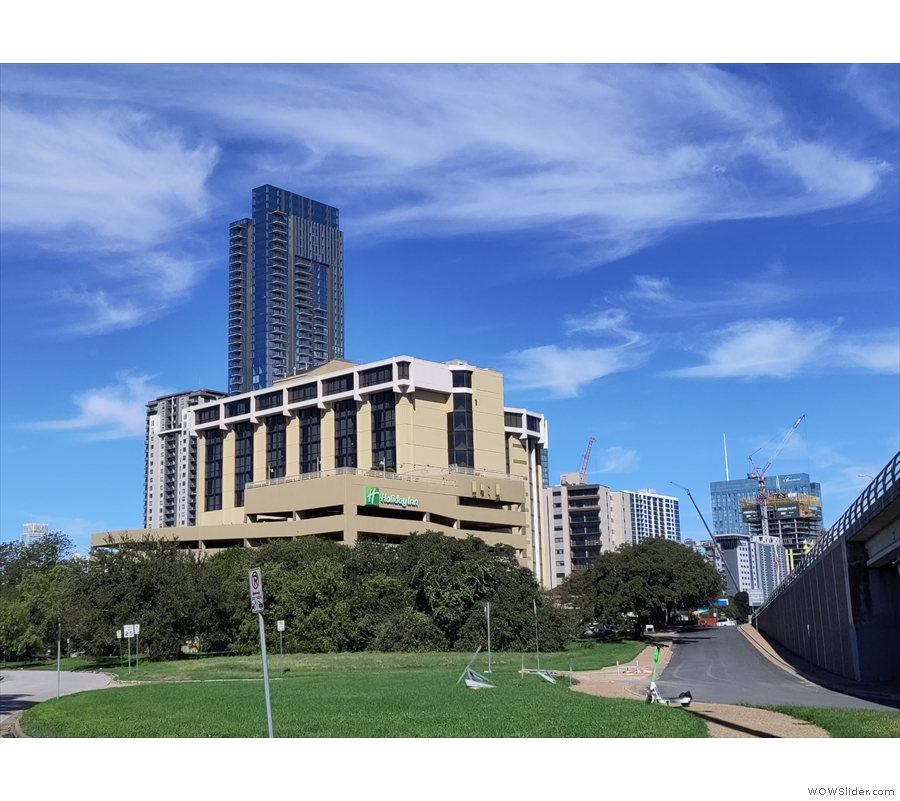
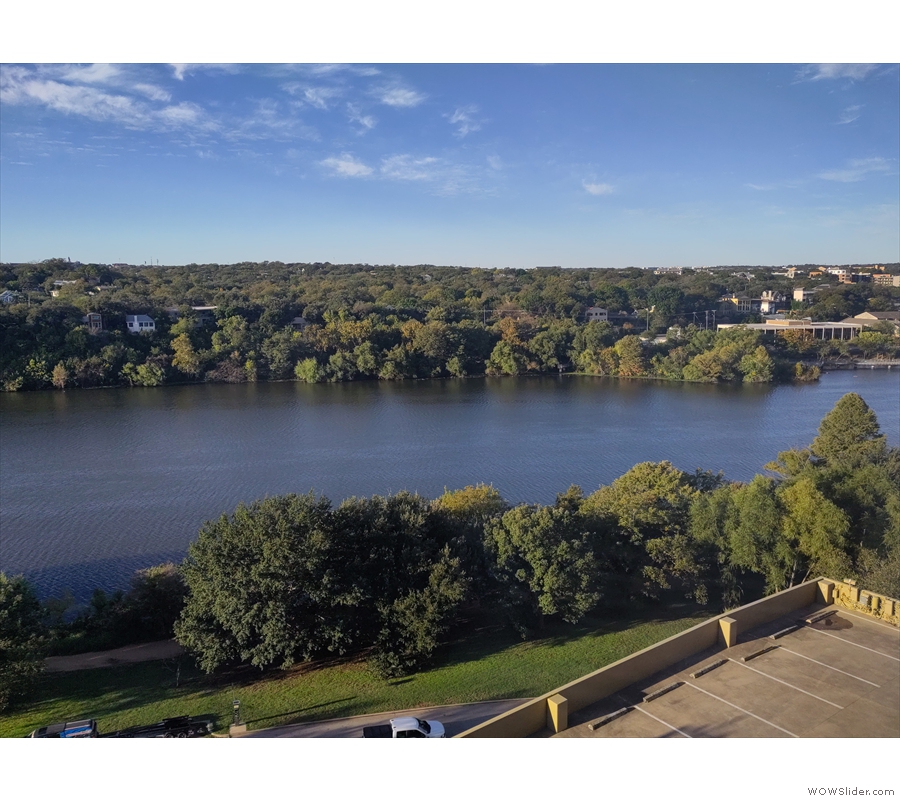
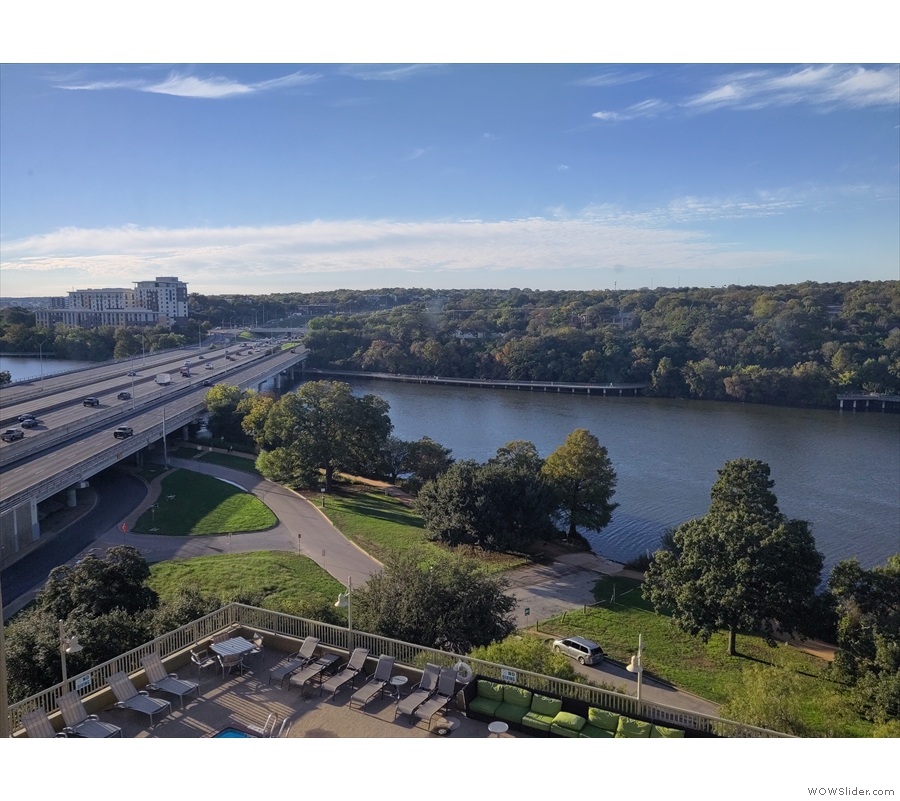
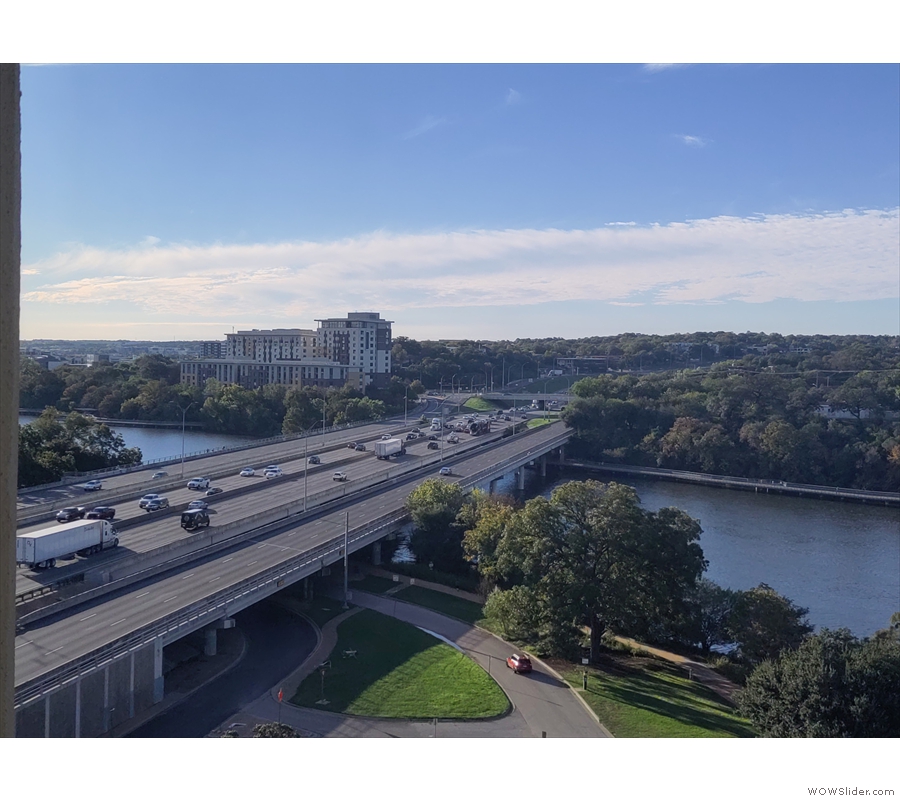
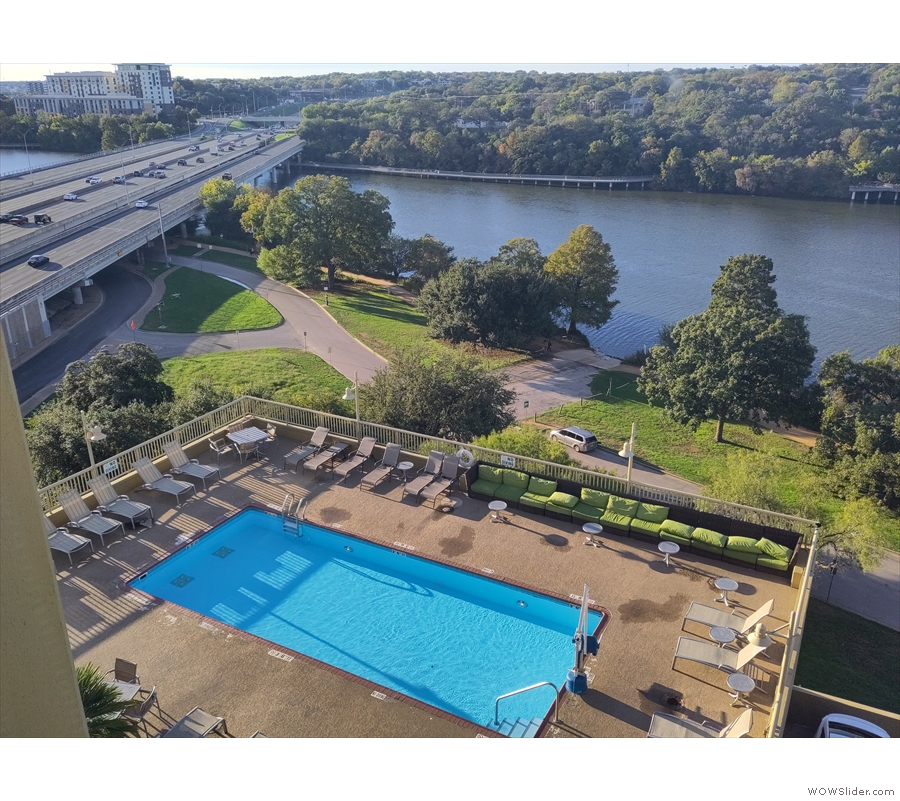
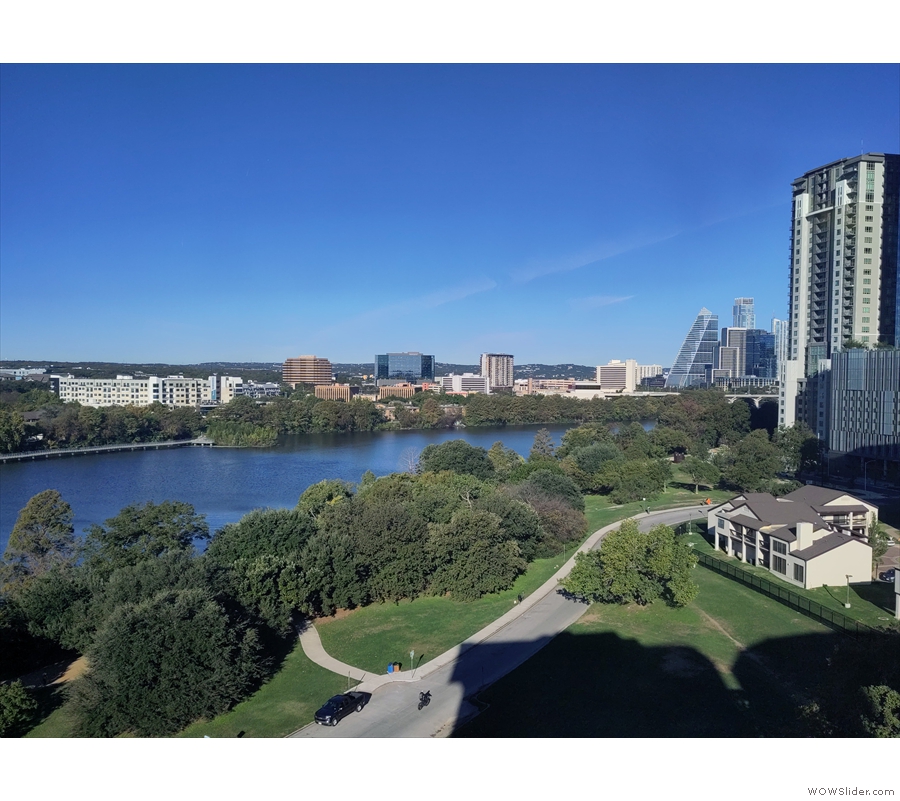
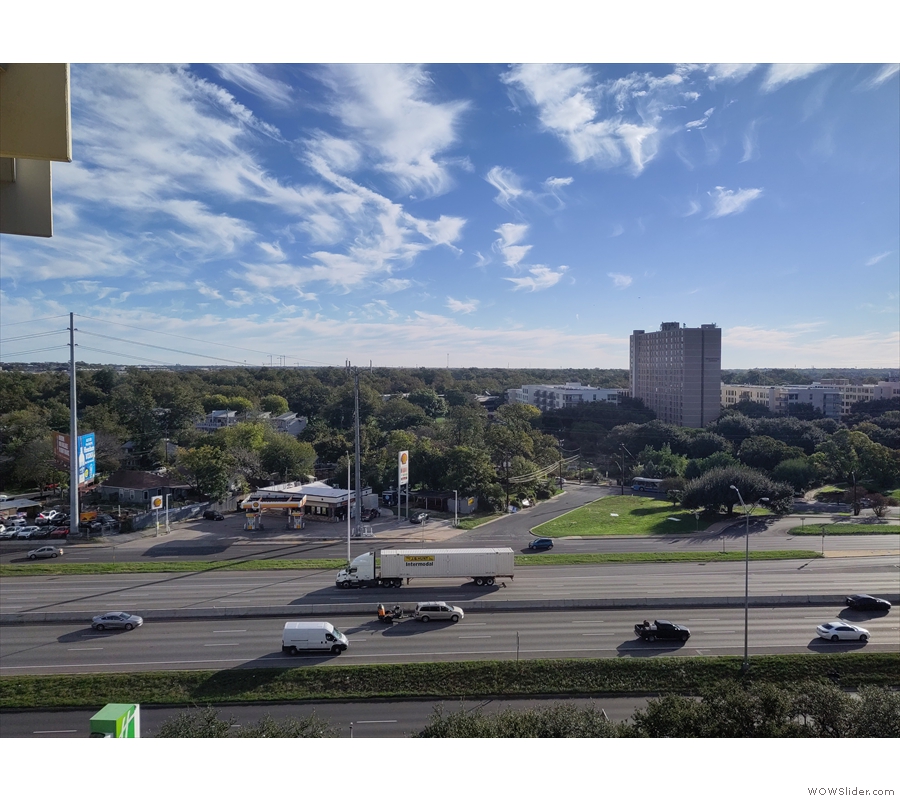
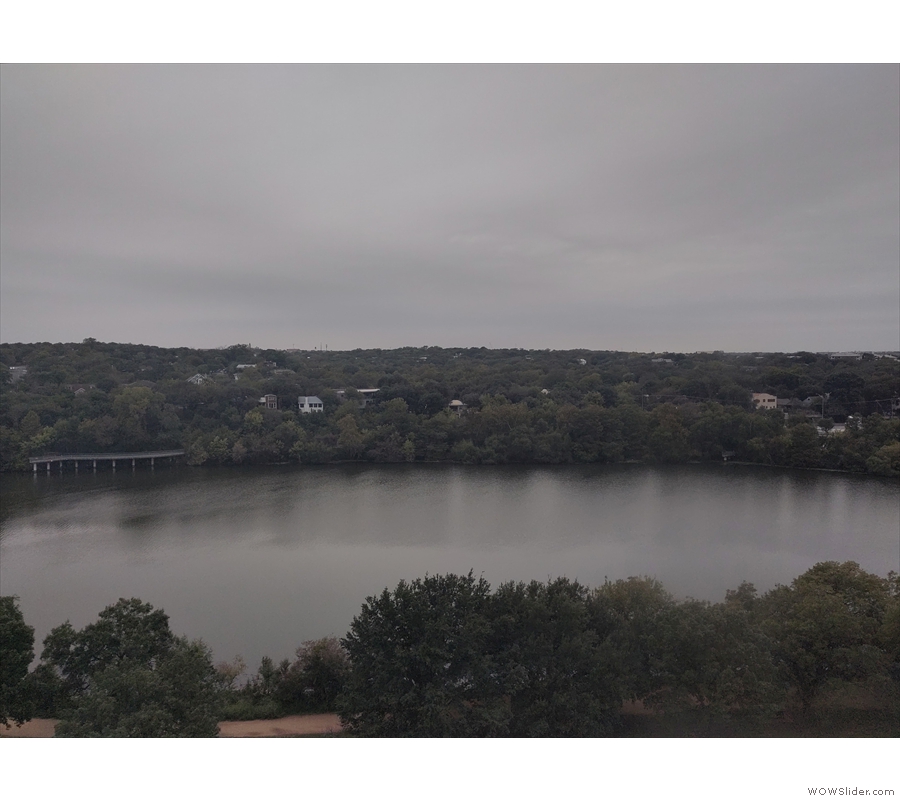
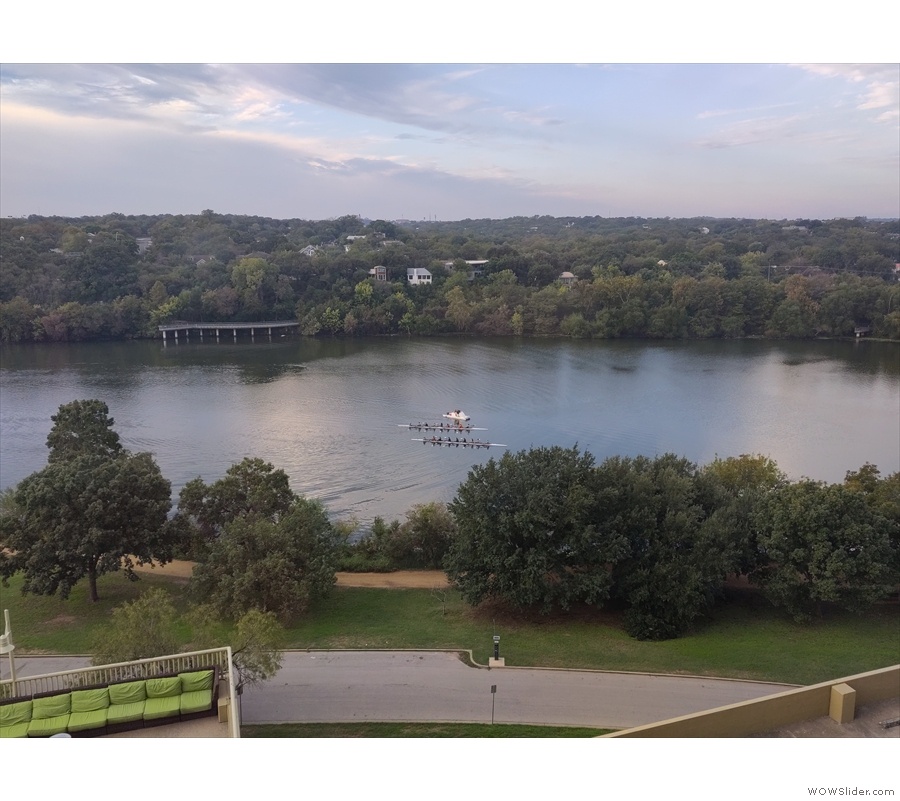
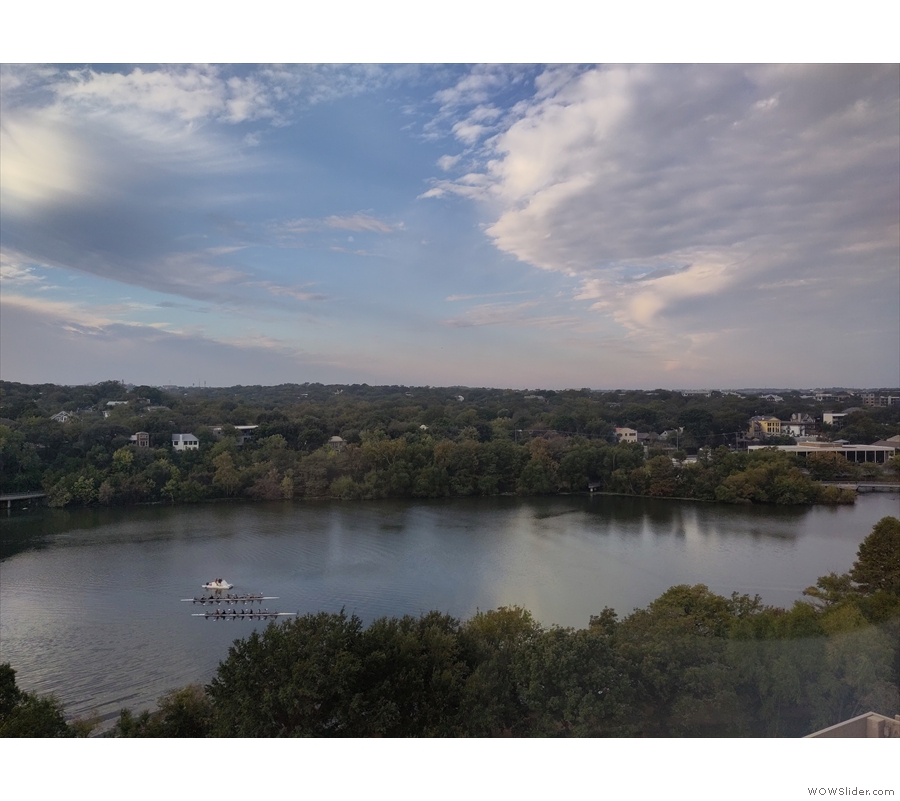
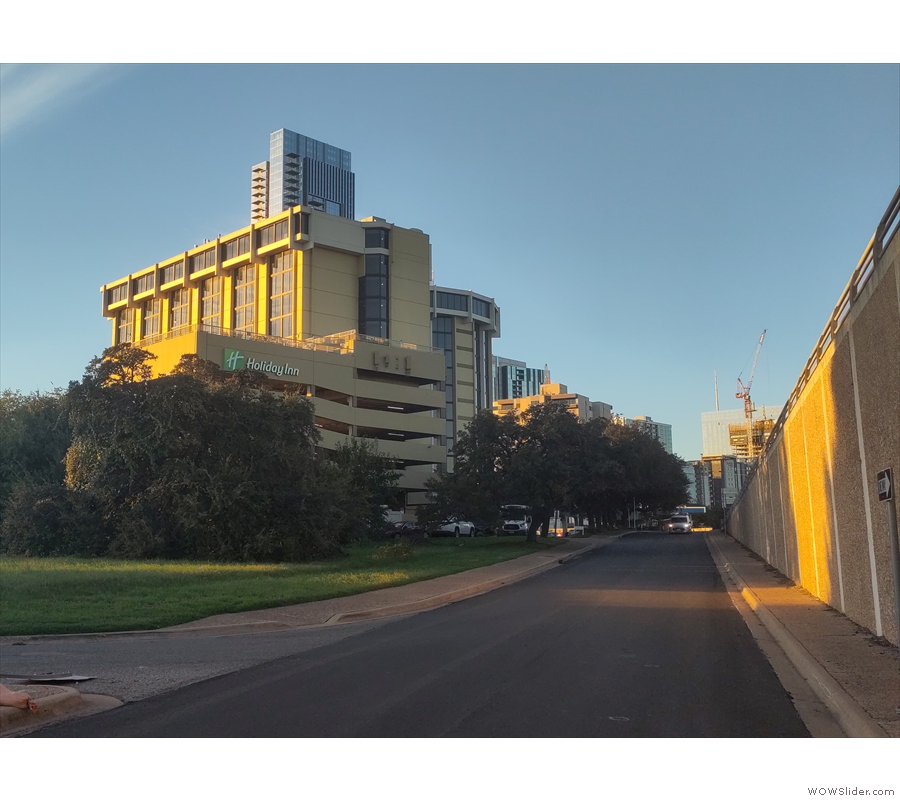
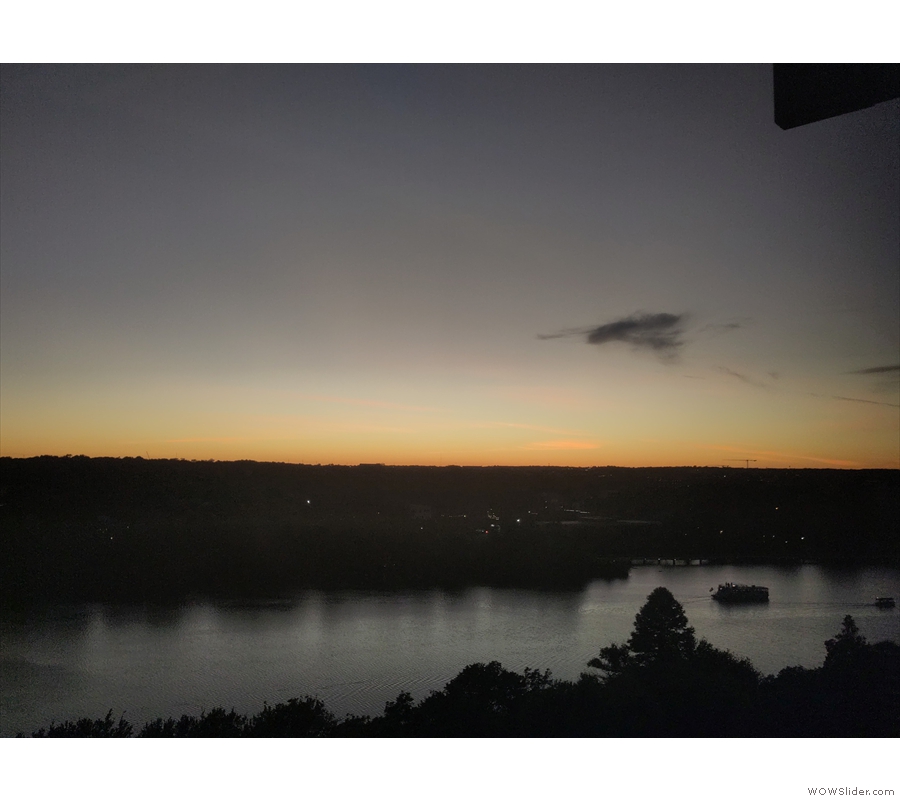
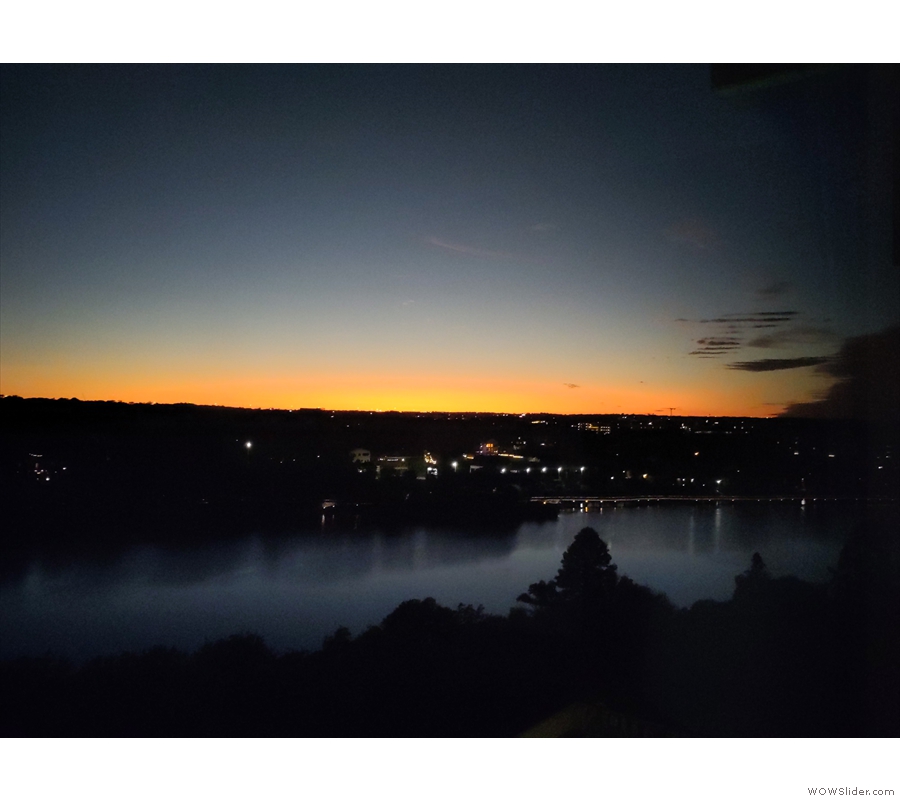
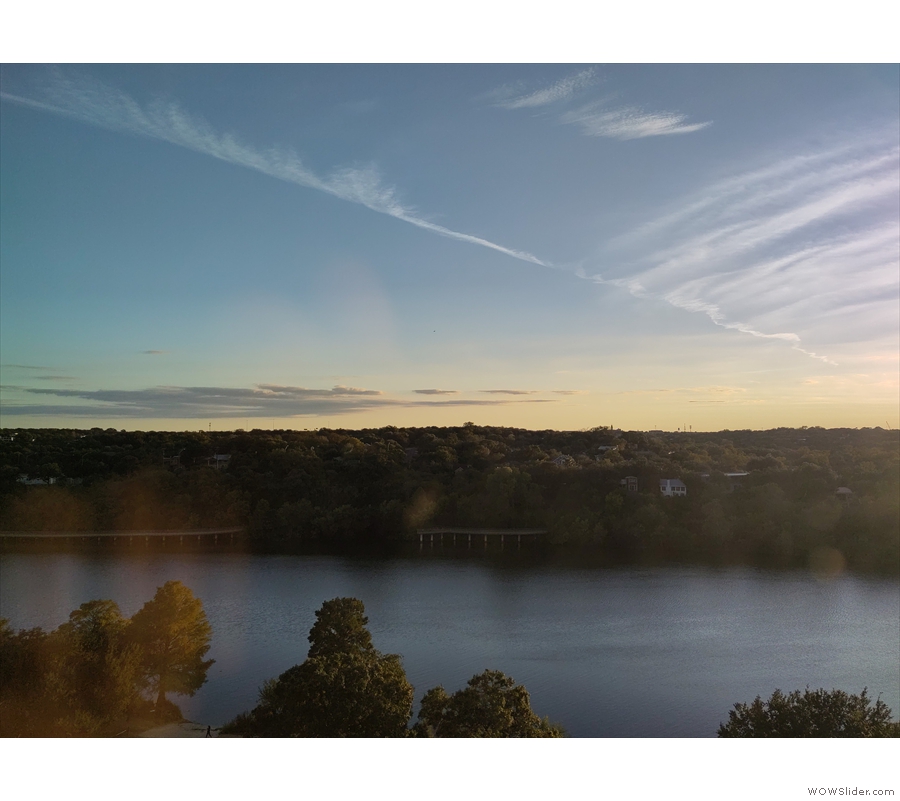
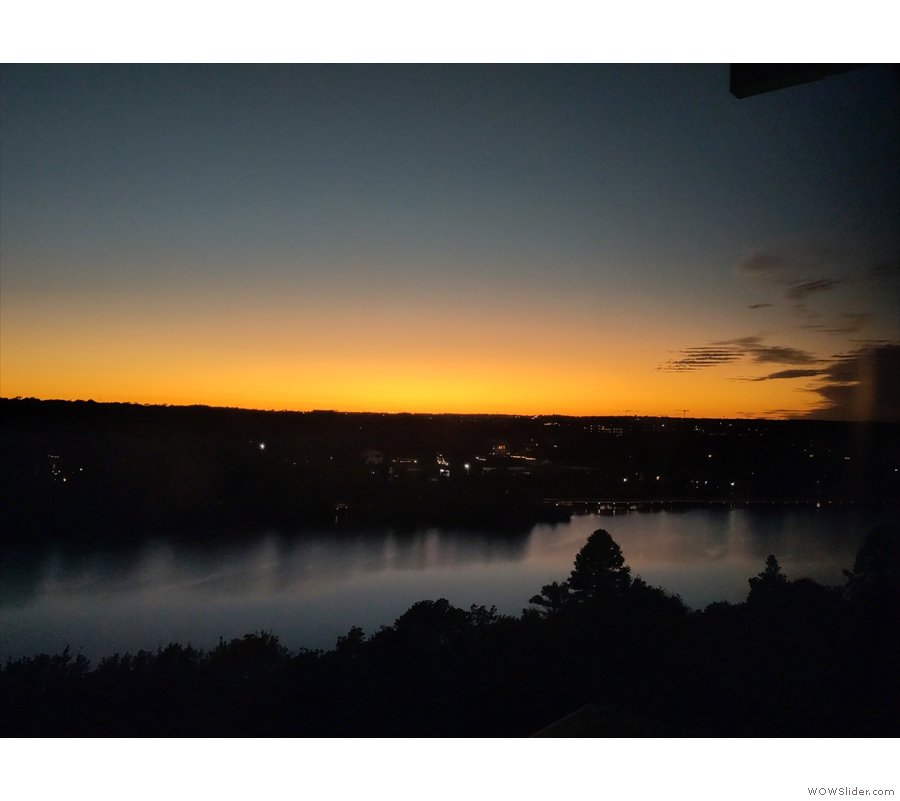
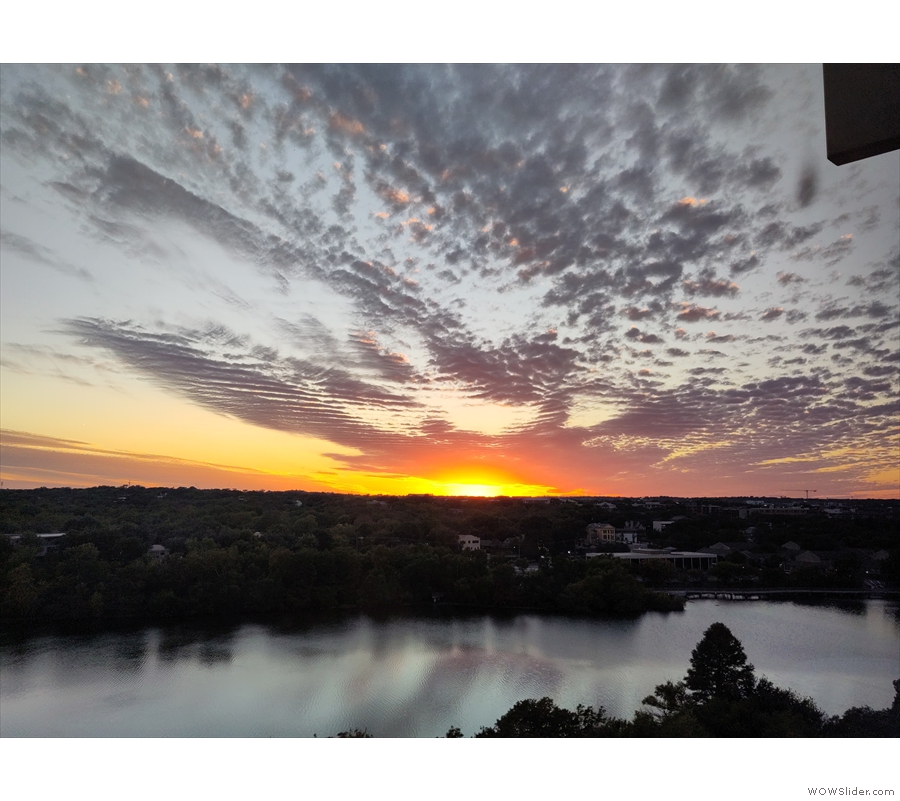
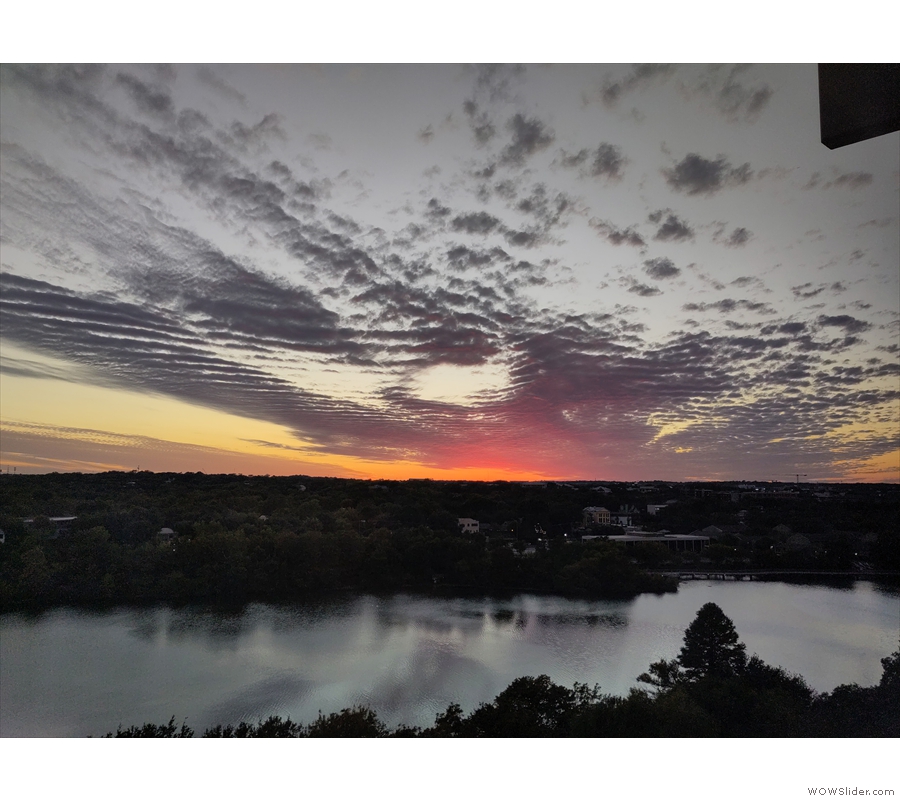
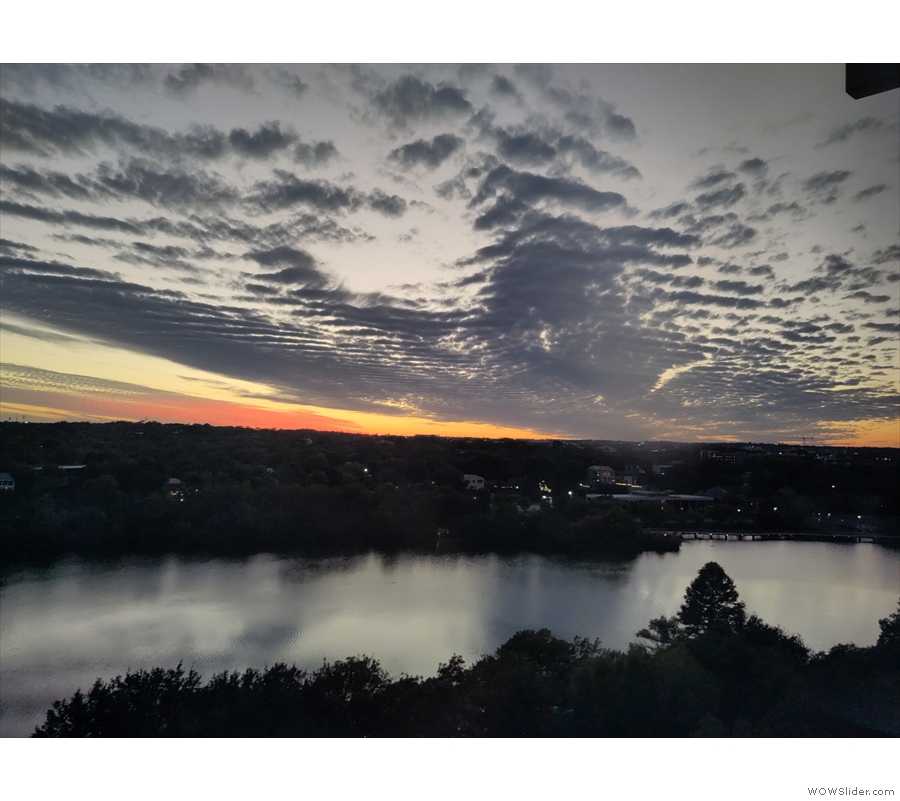
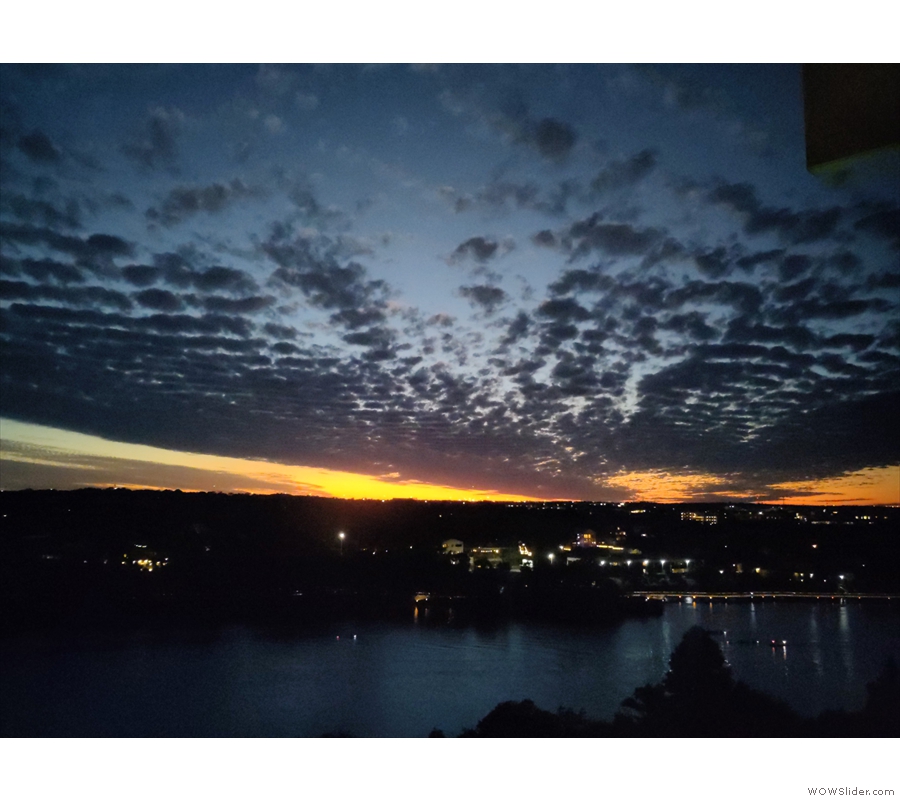
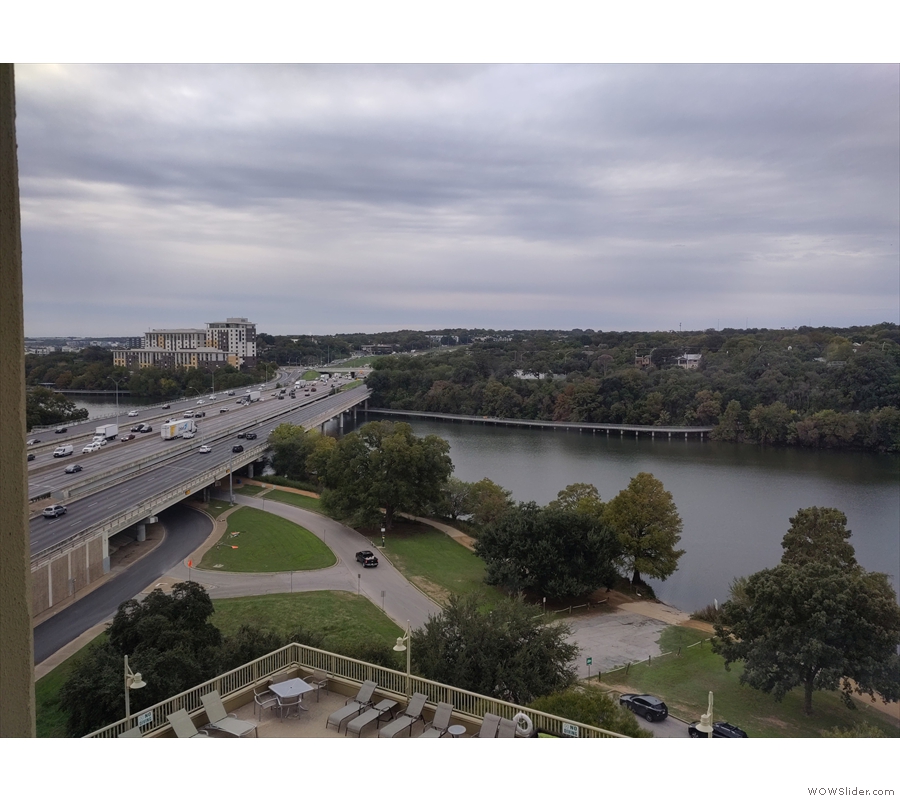
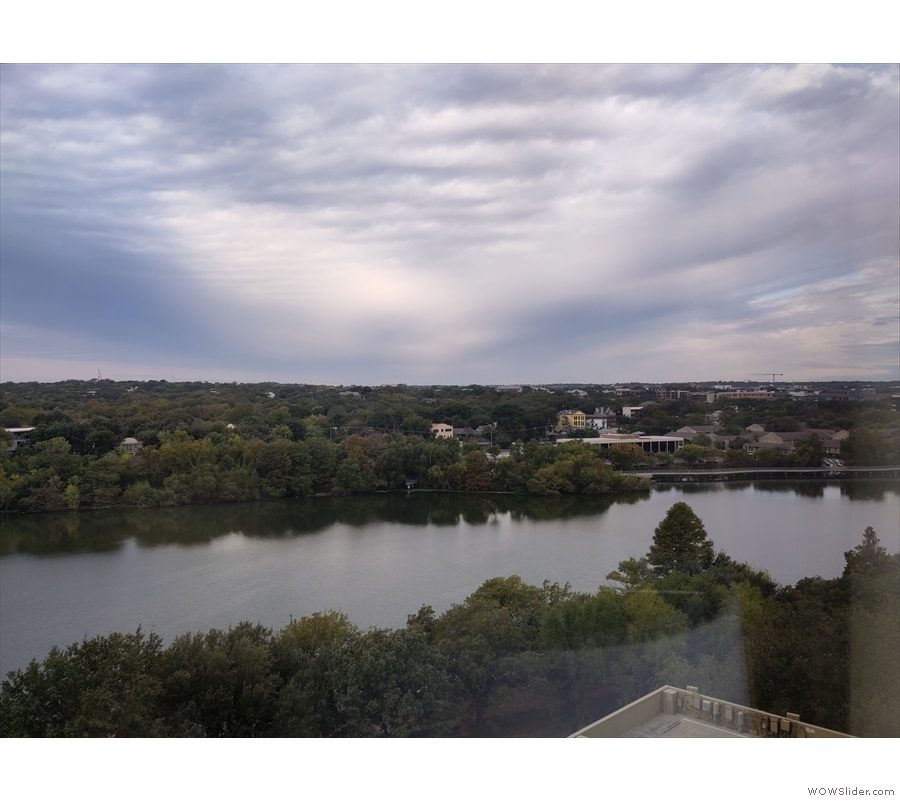
 1
1 2
2 3
3 4
4 5
5 6
6 7
7 8
8 9
9 10
10 11
11 12
12 13
13 14
14 15
15 16
16 17
17 18
18 19
19 20
20 21
21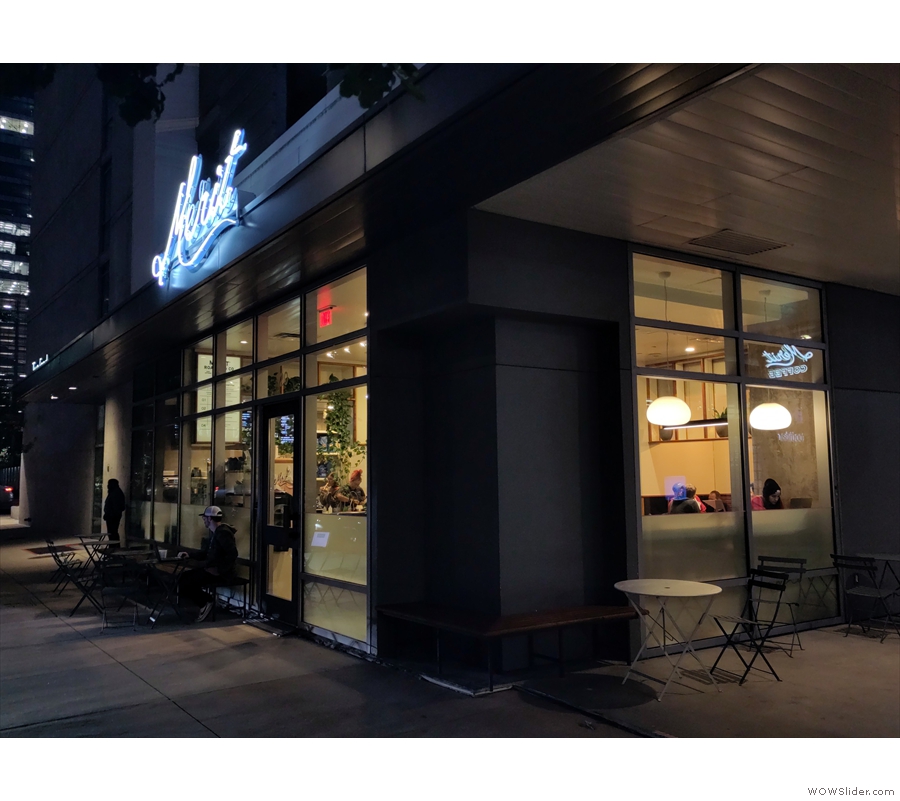

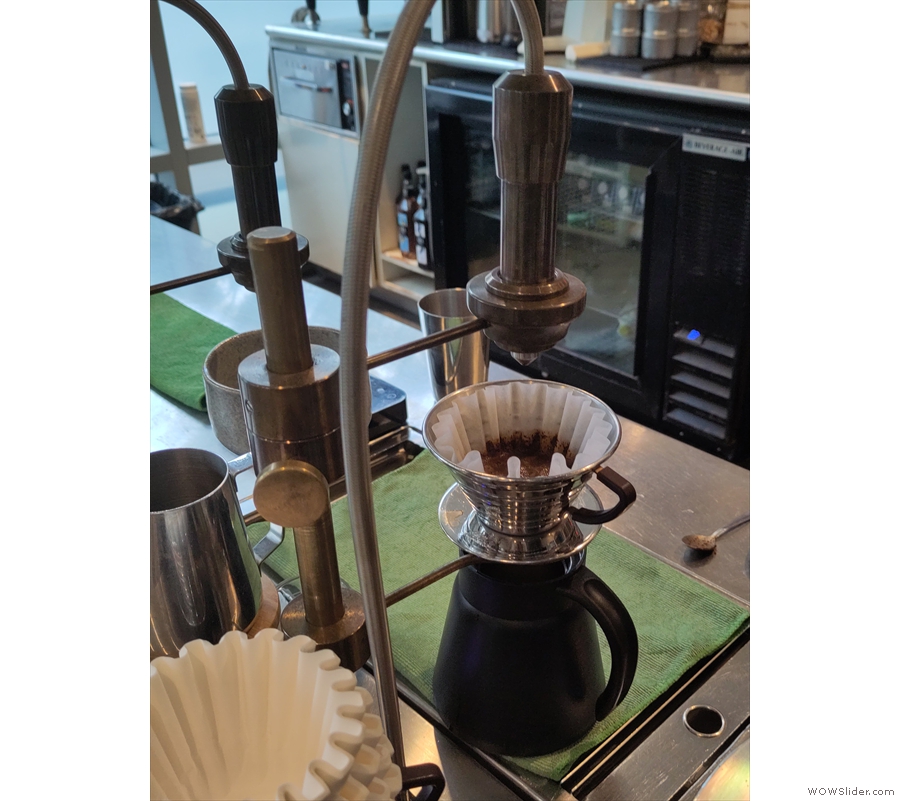
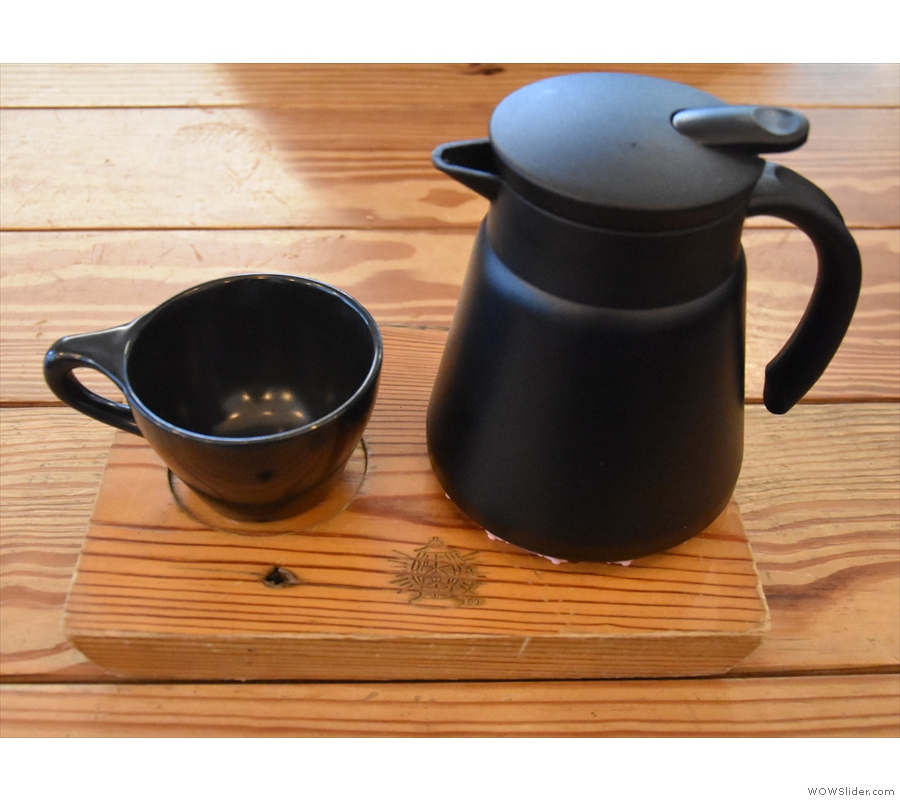
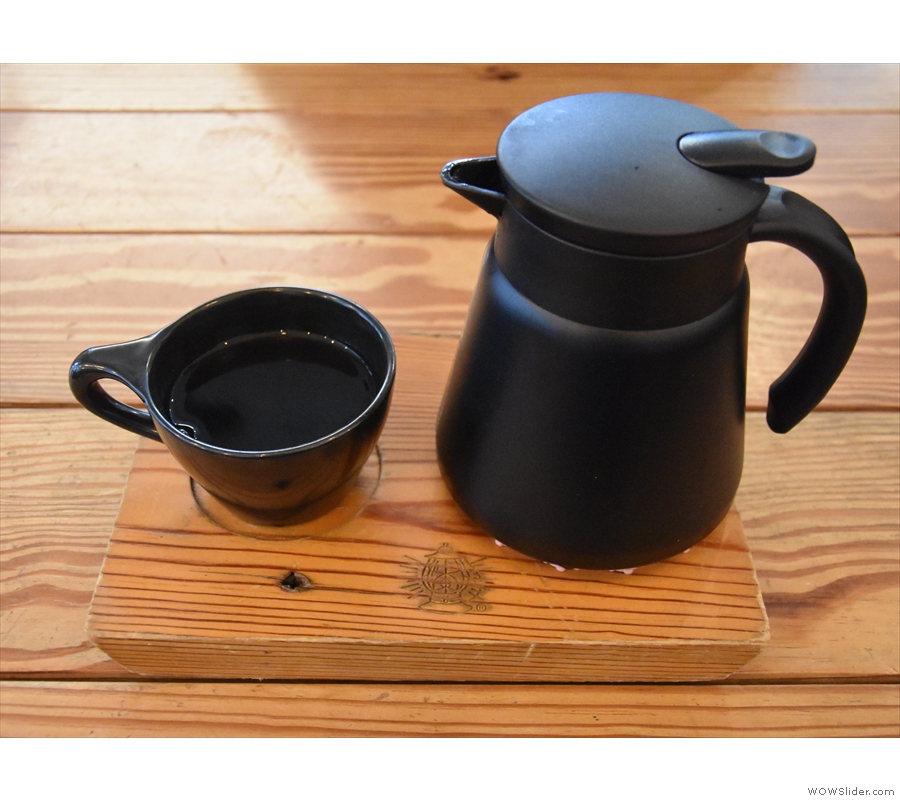
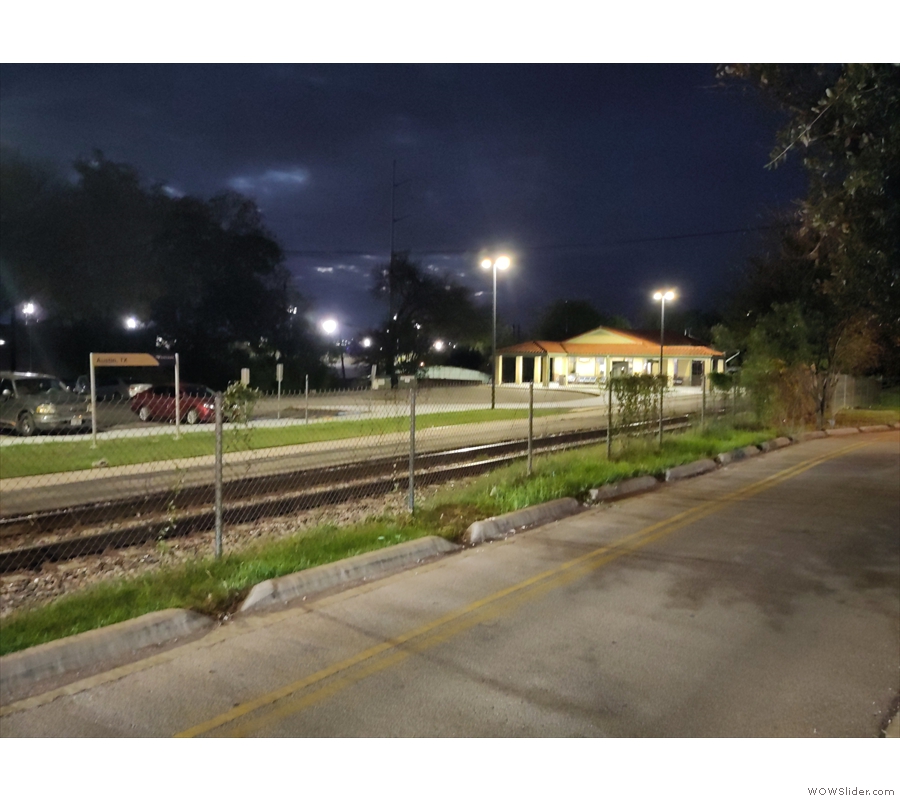
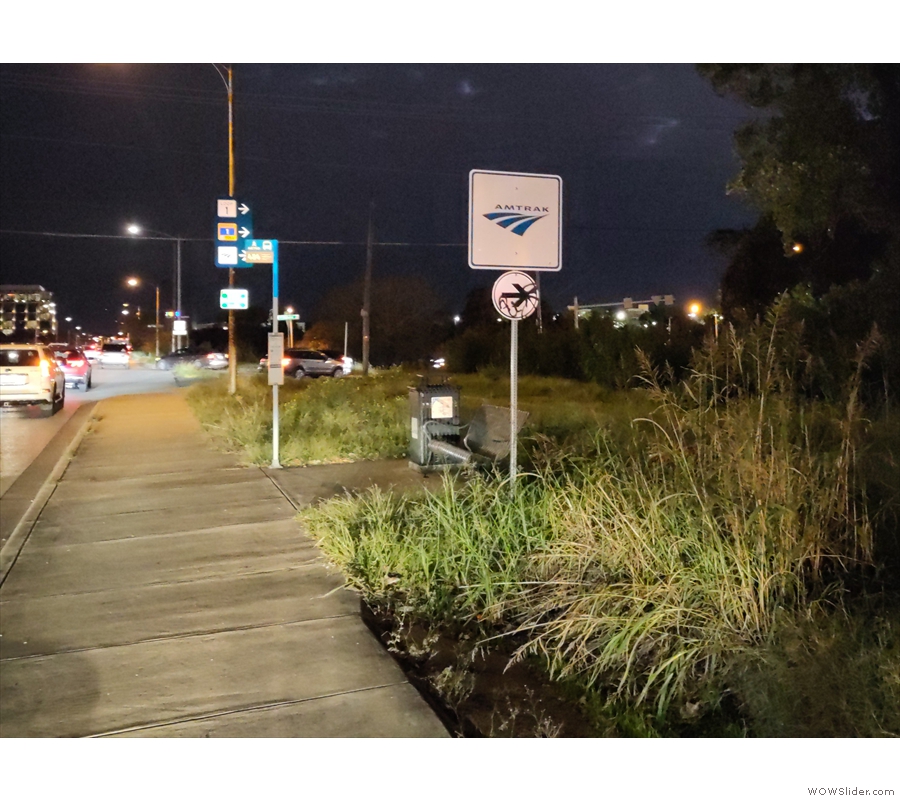
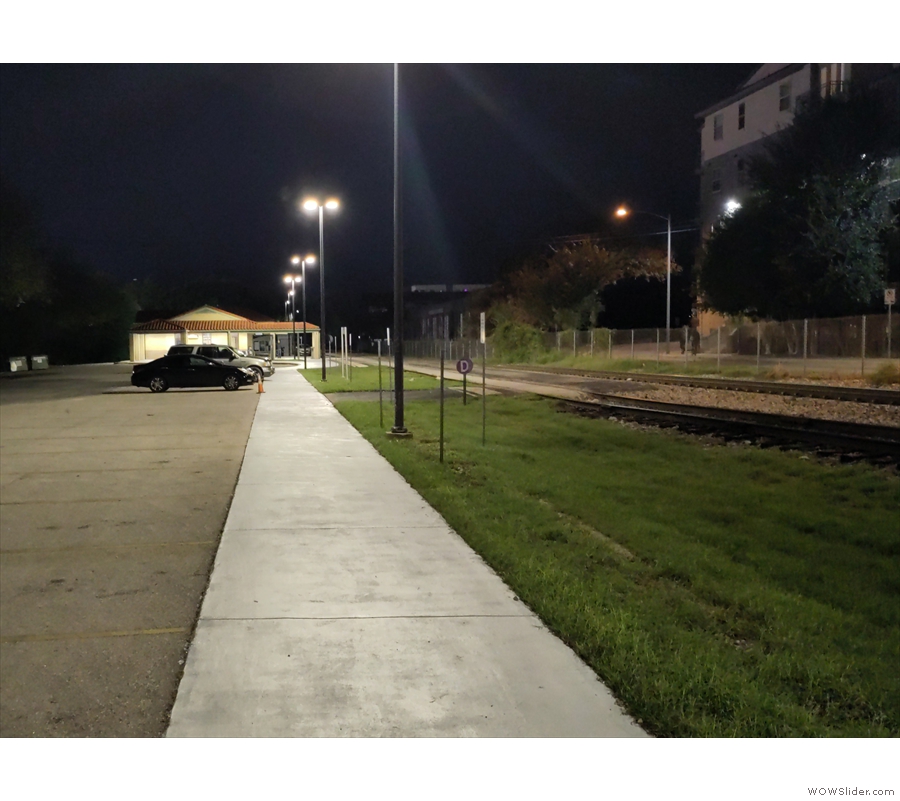
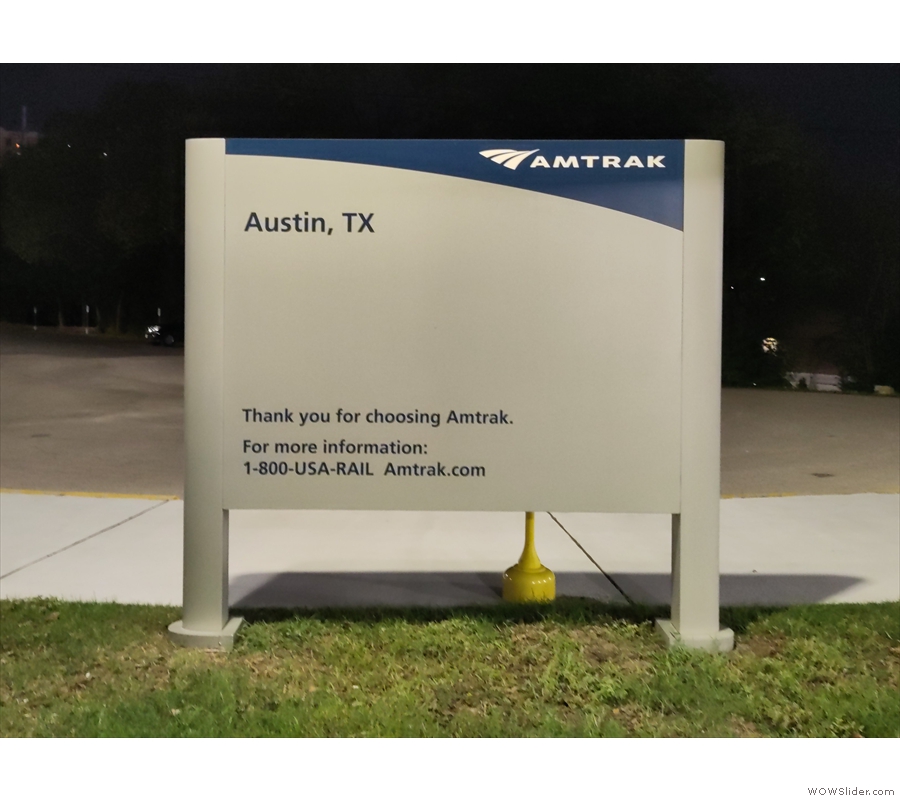
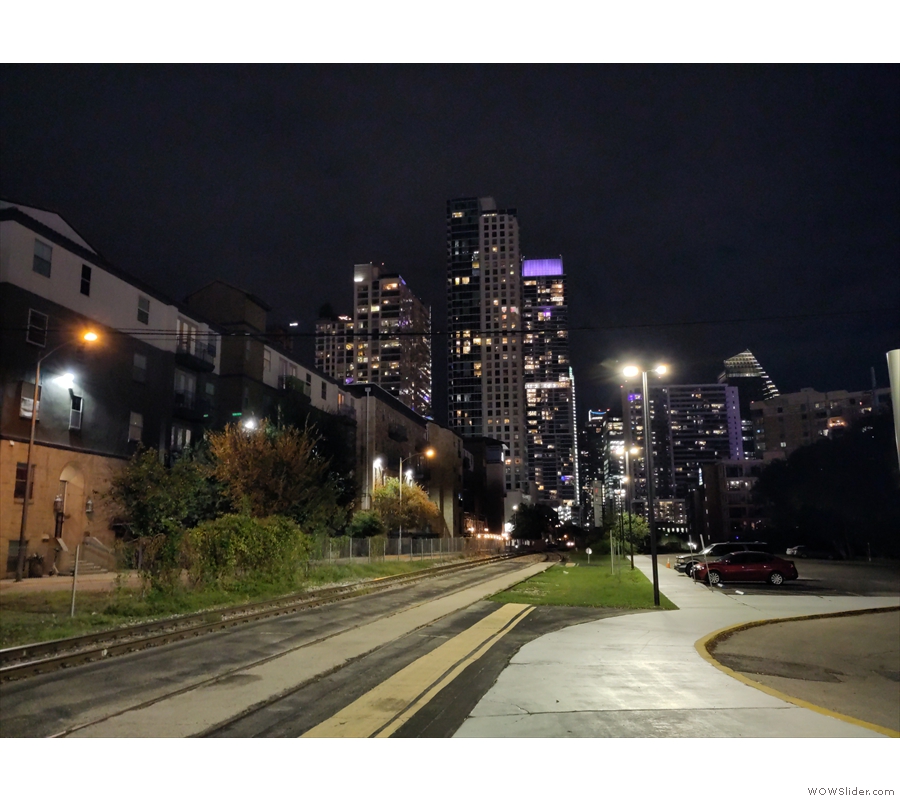
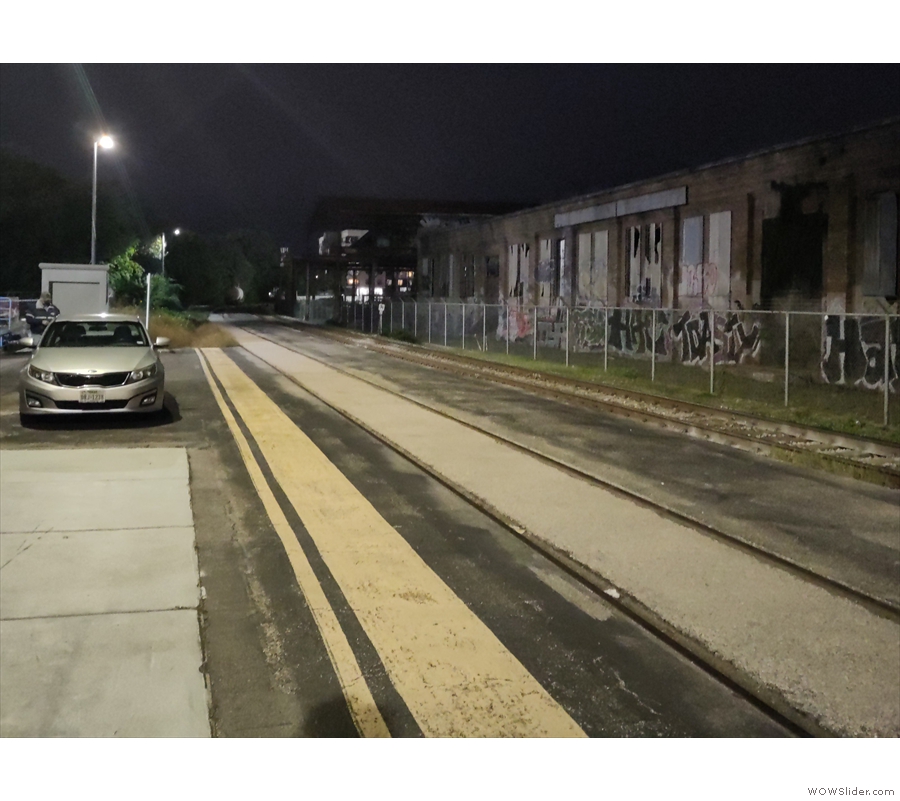
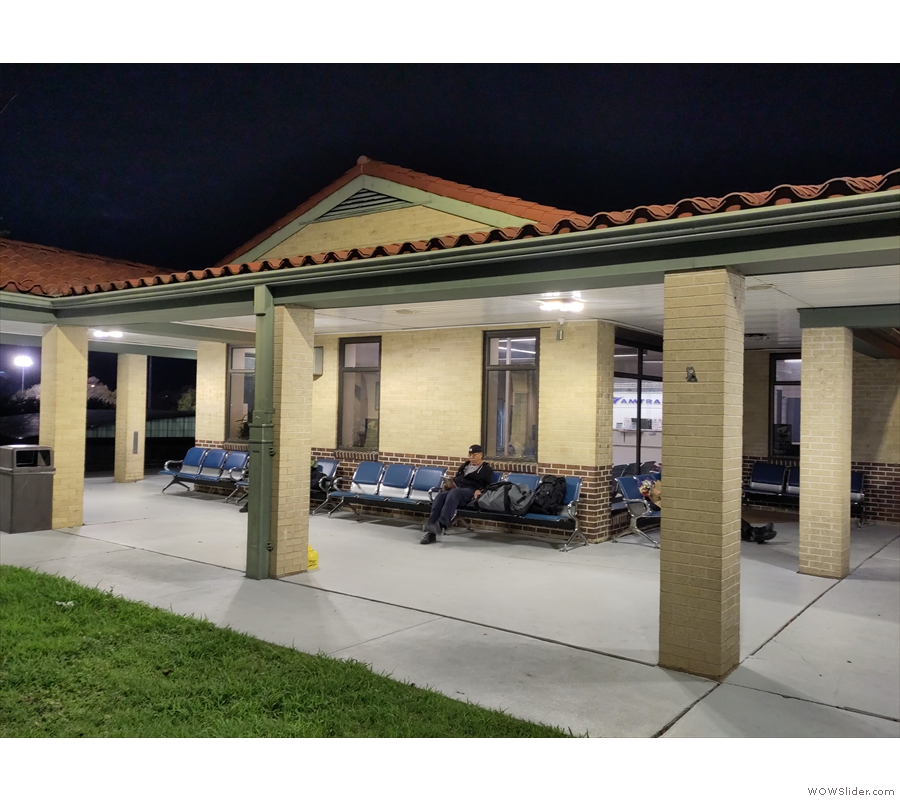
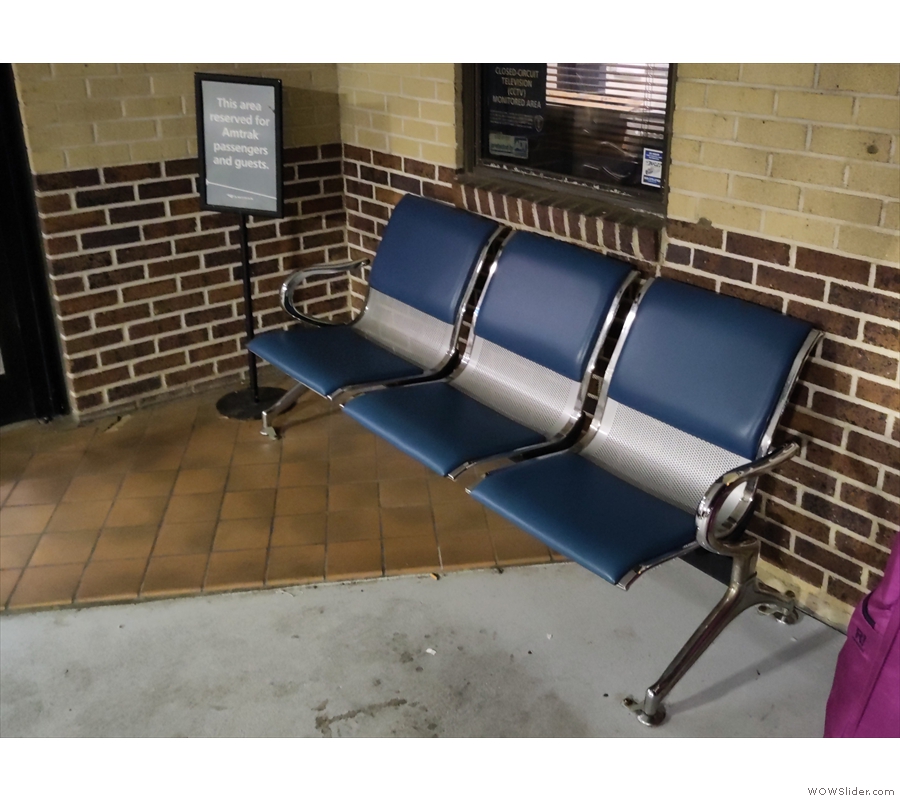
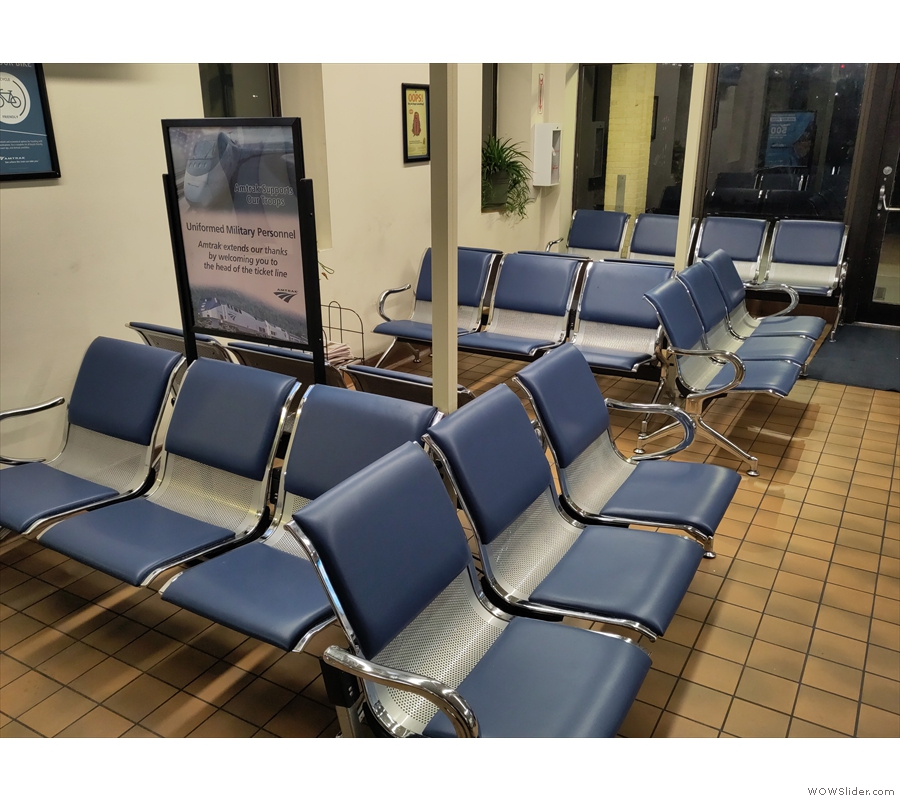
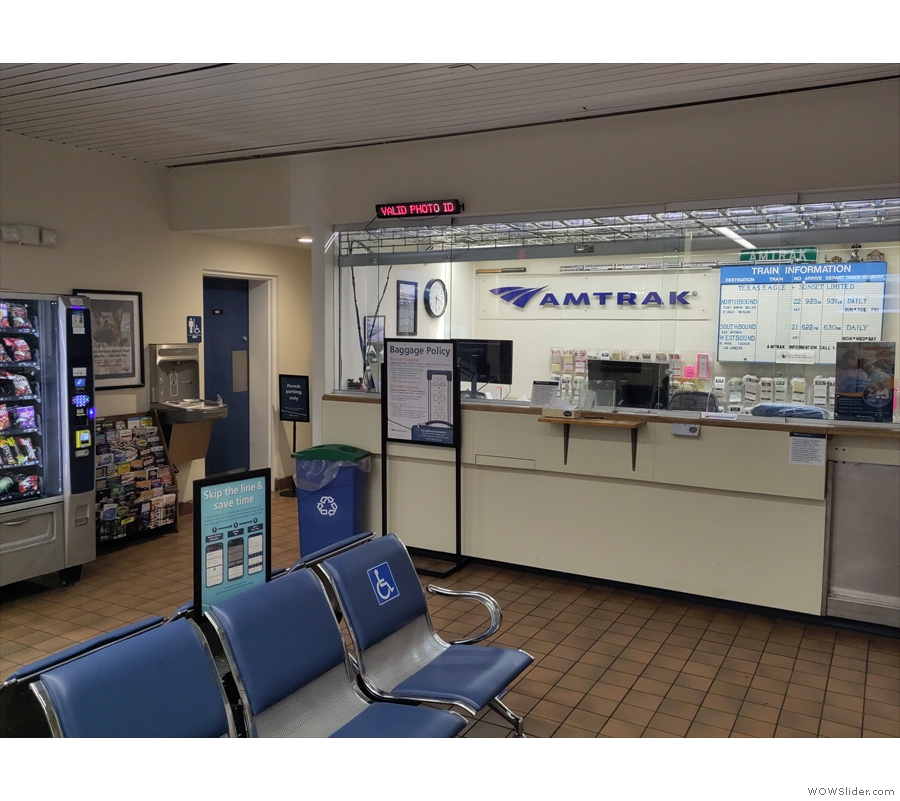
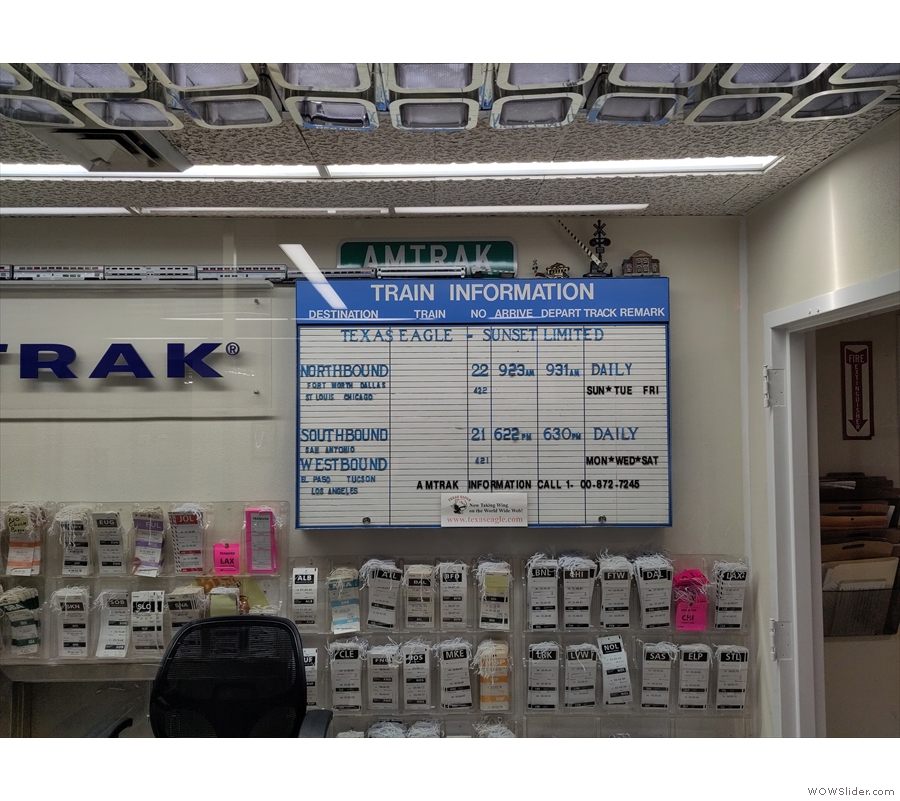
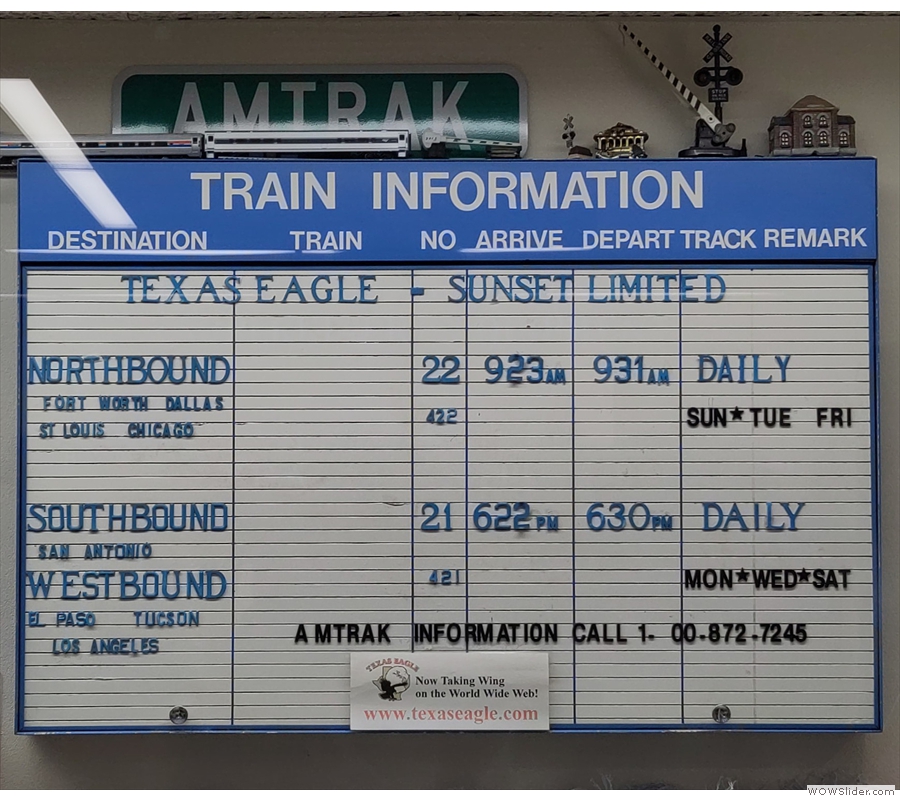
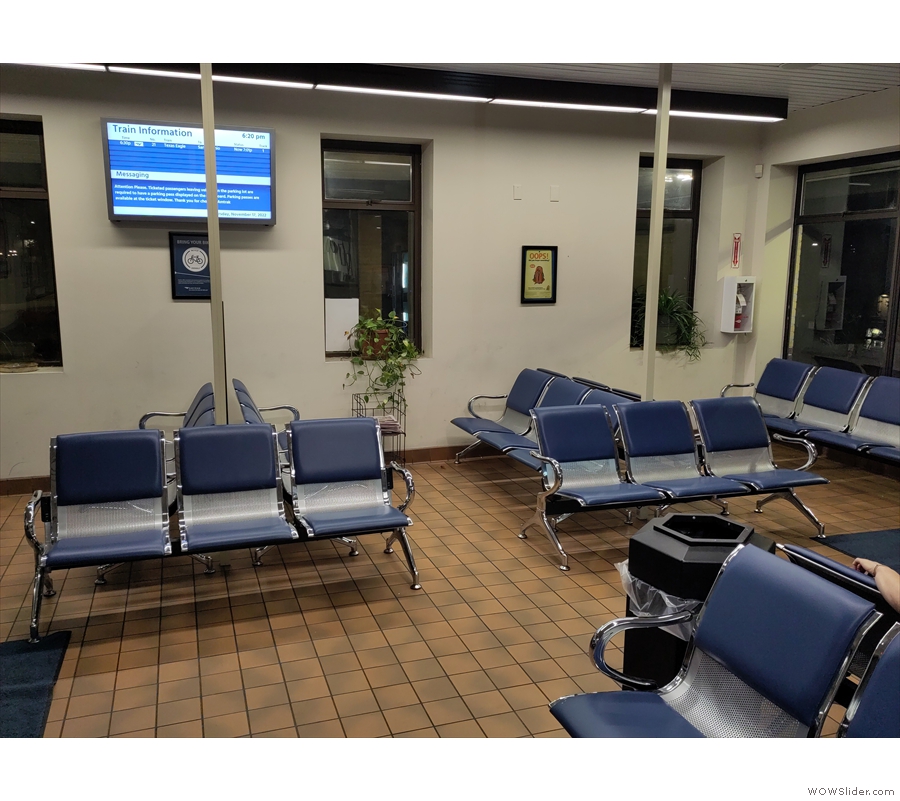
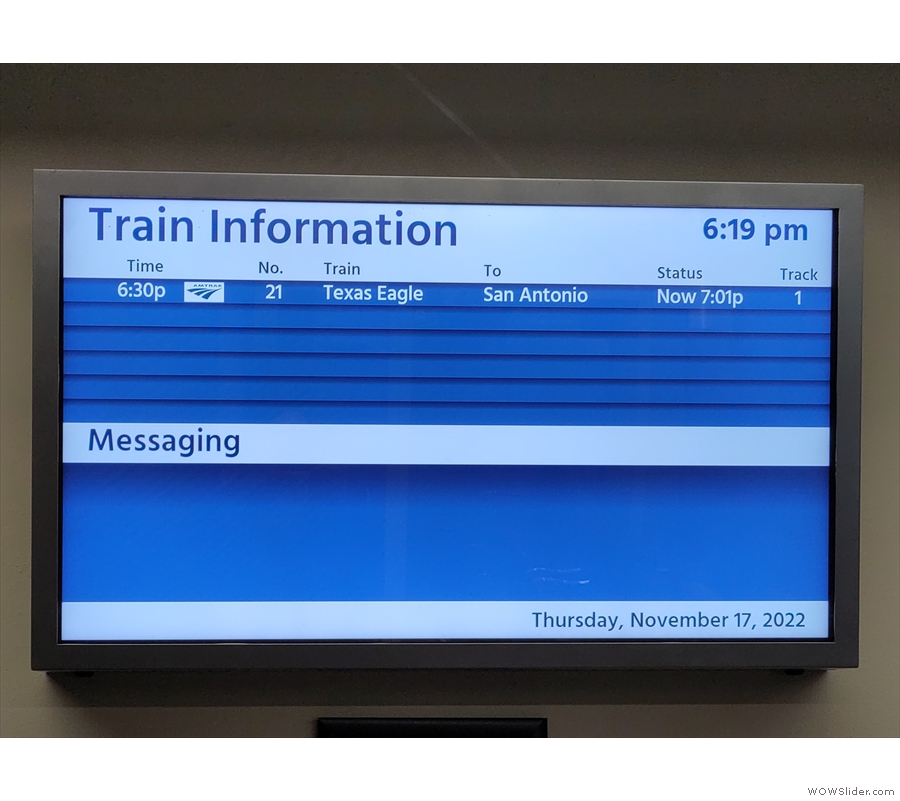
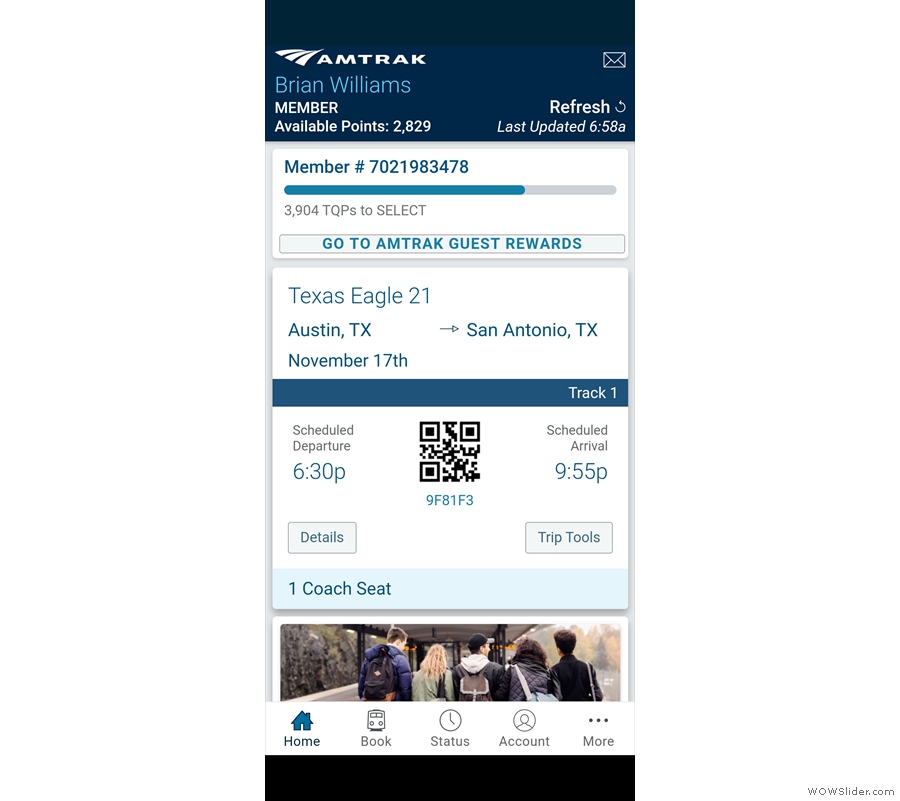
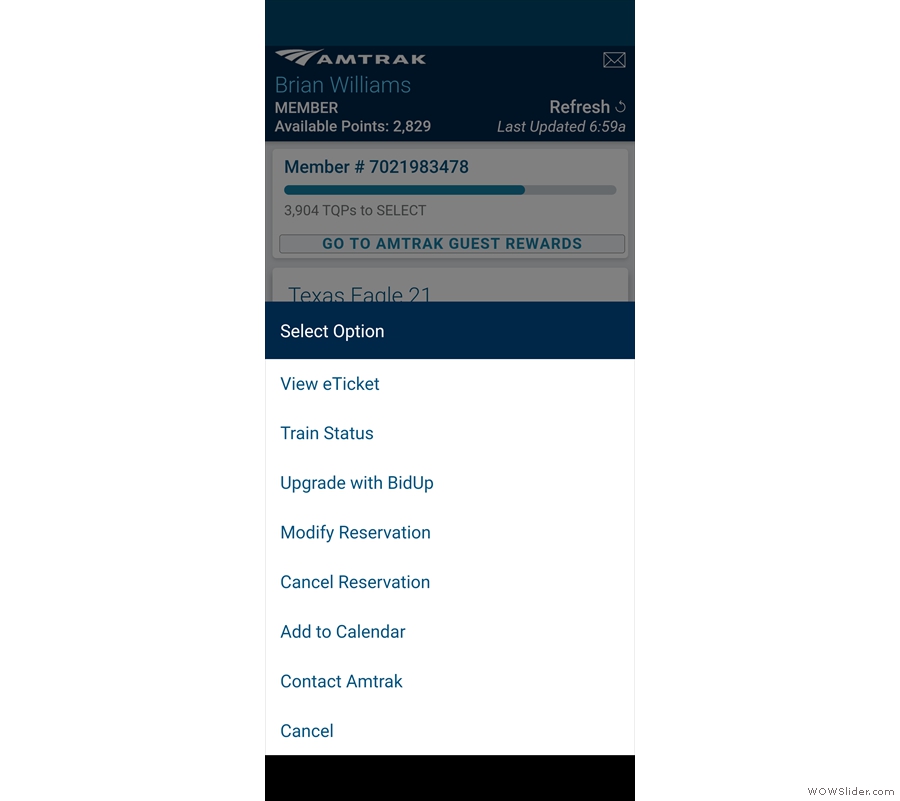
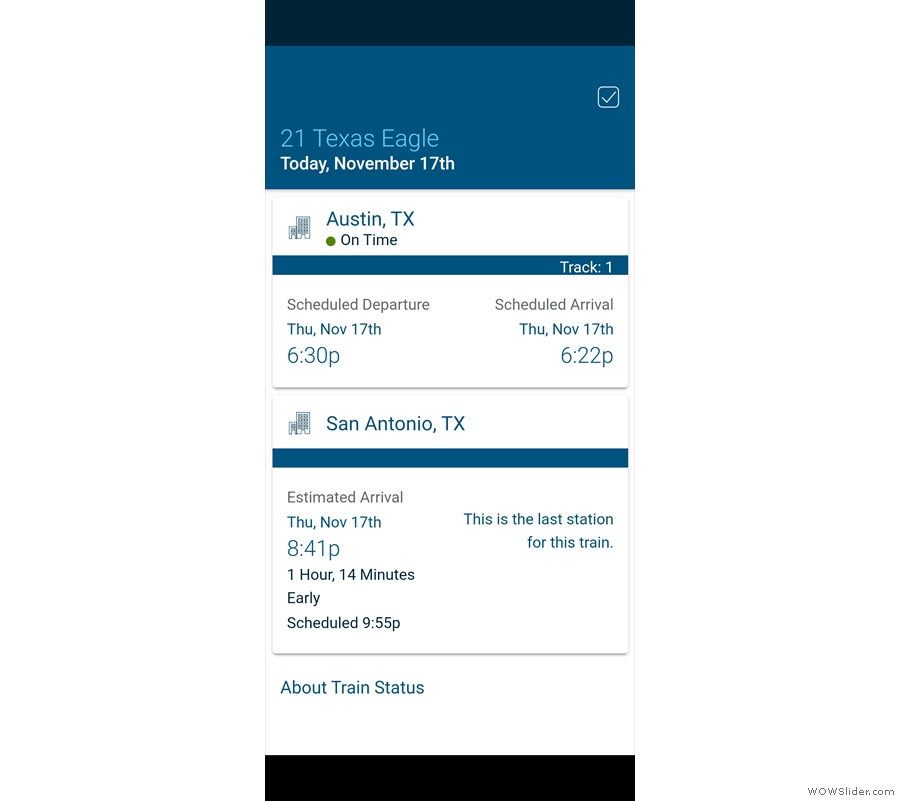
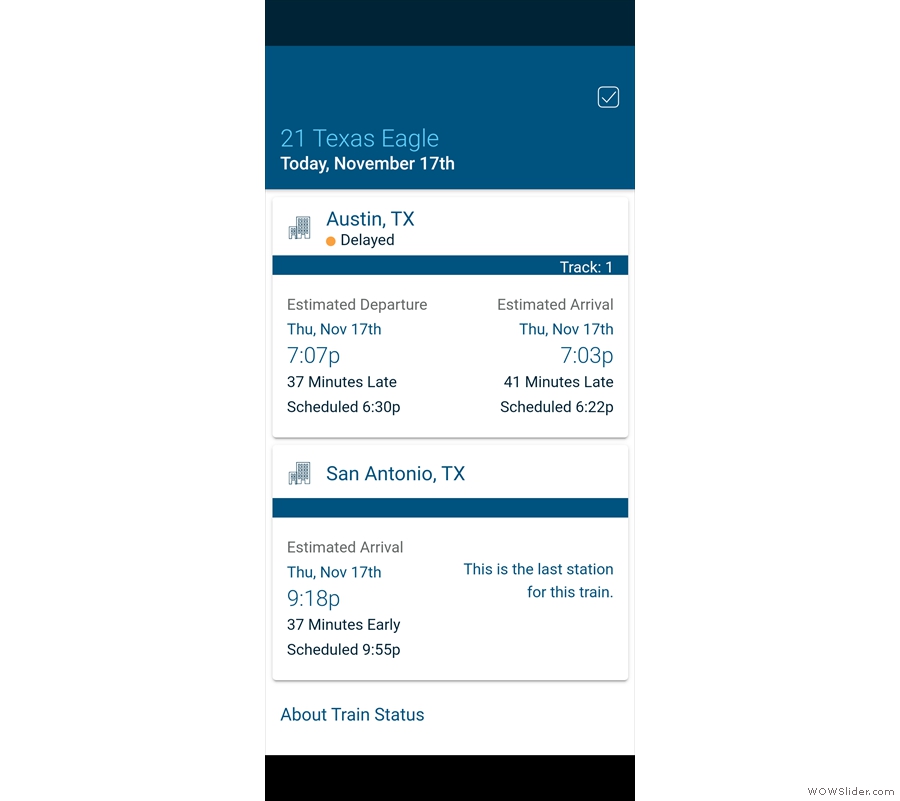
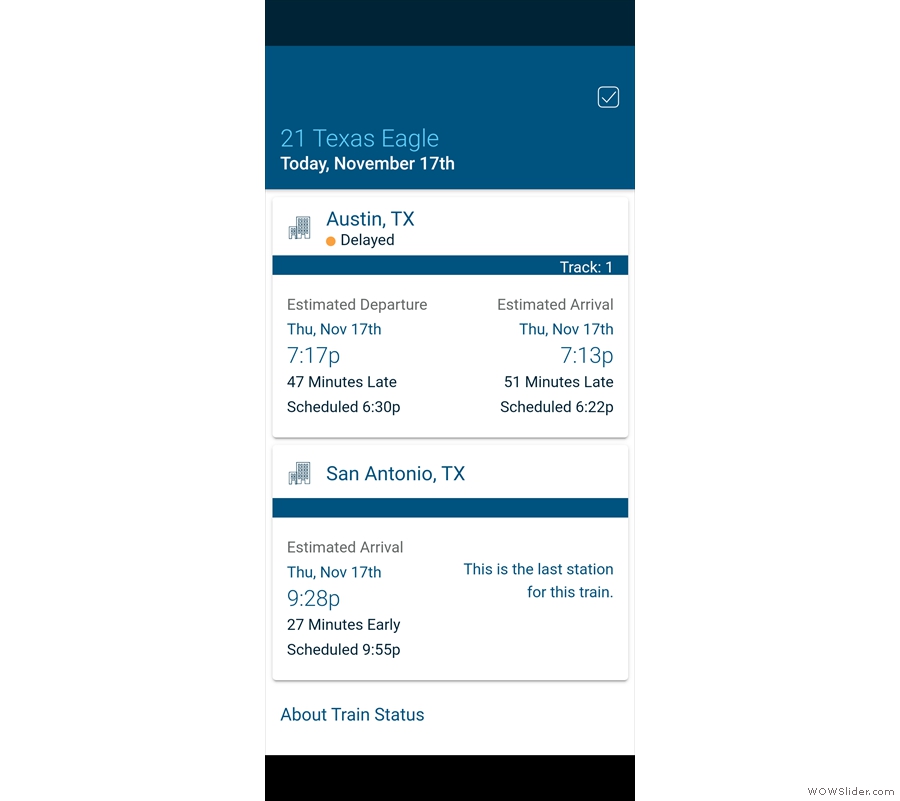
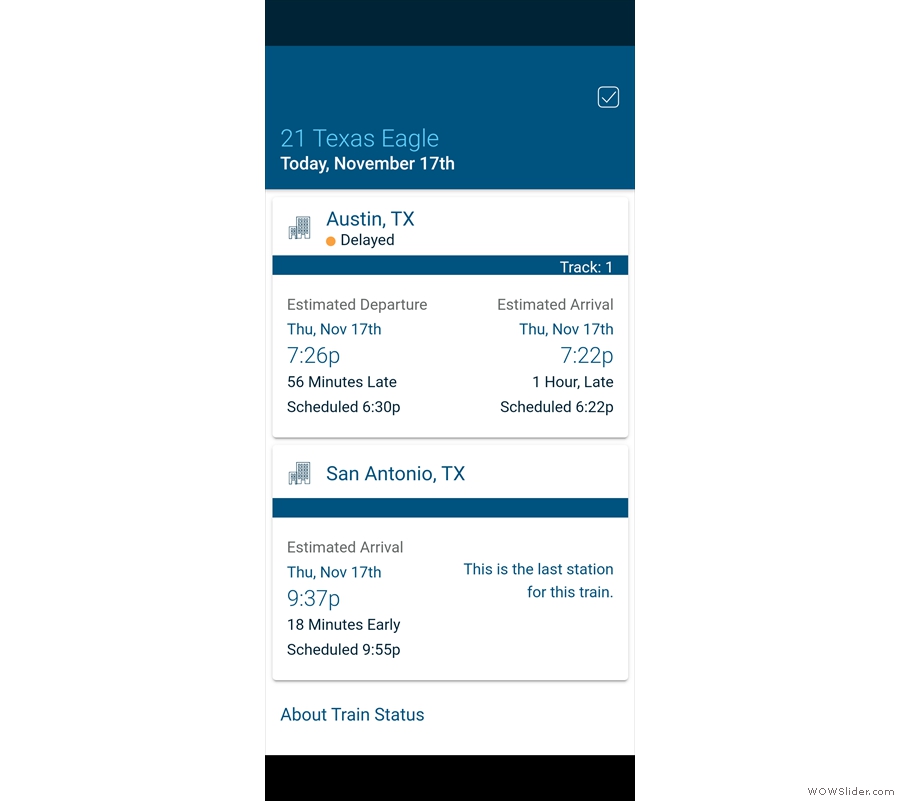
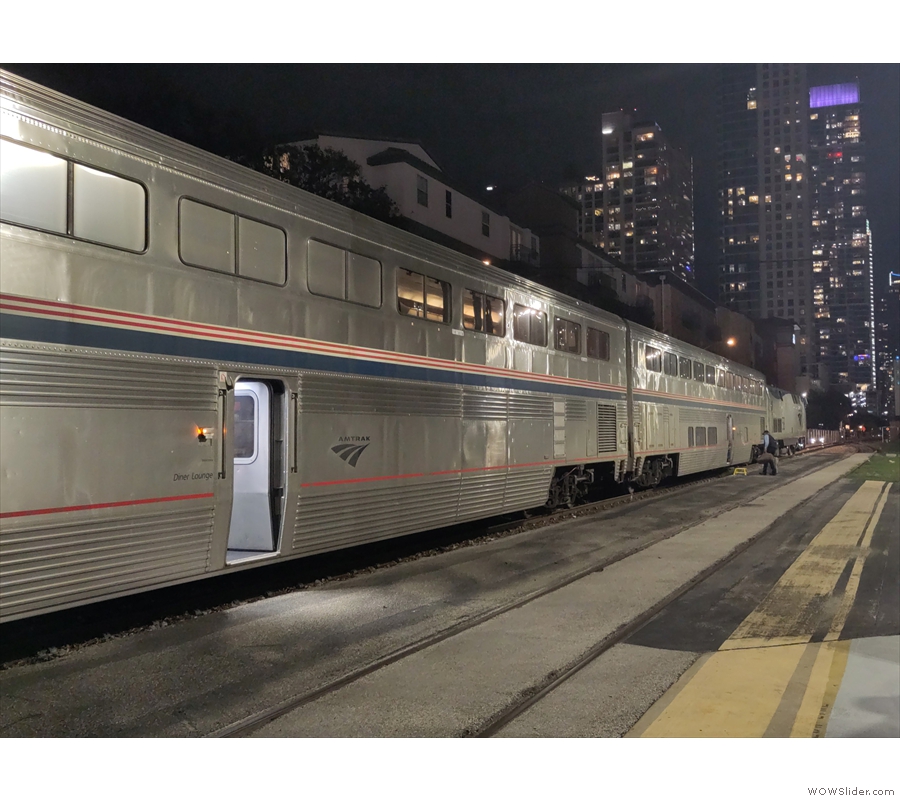
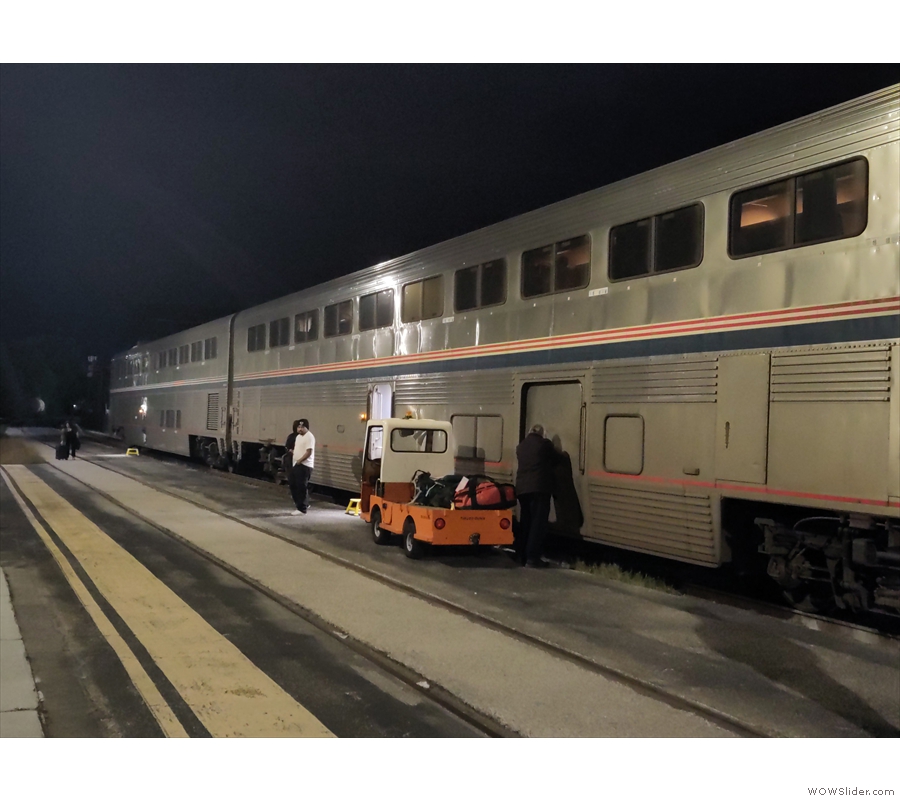
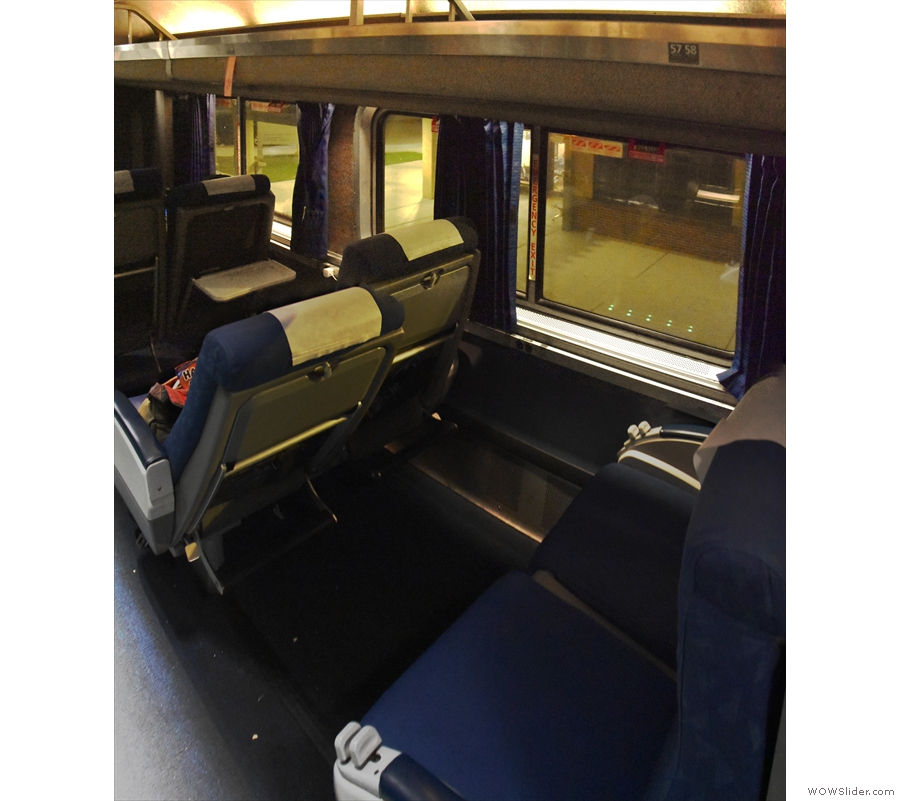
 1
1 2
2 3
3 4
4 5
5 6
6 7
7 8
8 9
9 10
10 11
11 12
12 13
13 14
14 15
15 16
16 17
17 18
18 19
19 20
20 21
21 22
22 23
23 24
24 25
25 26
26 27
27 28
28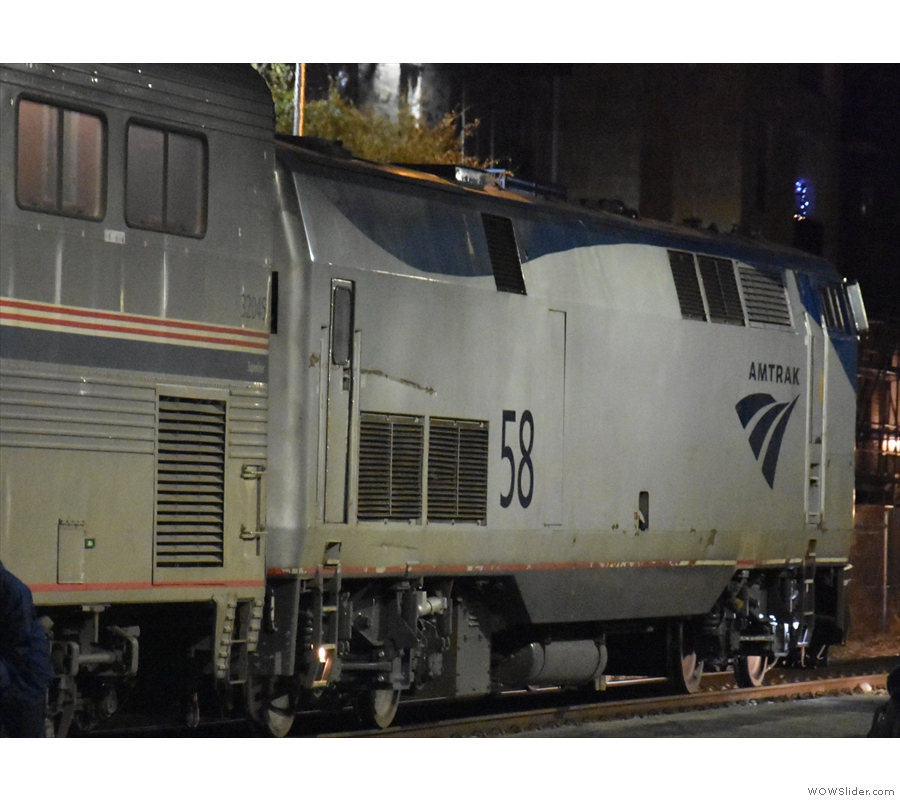


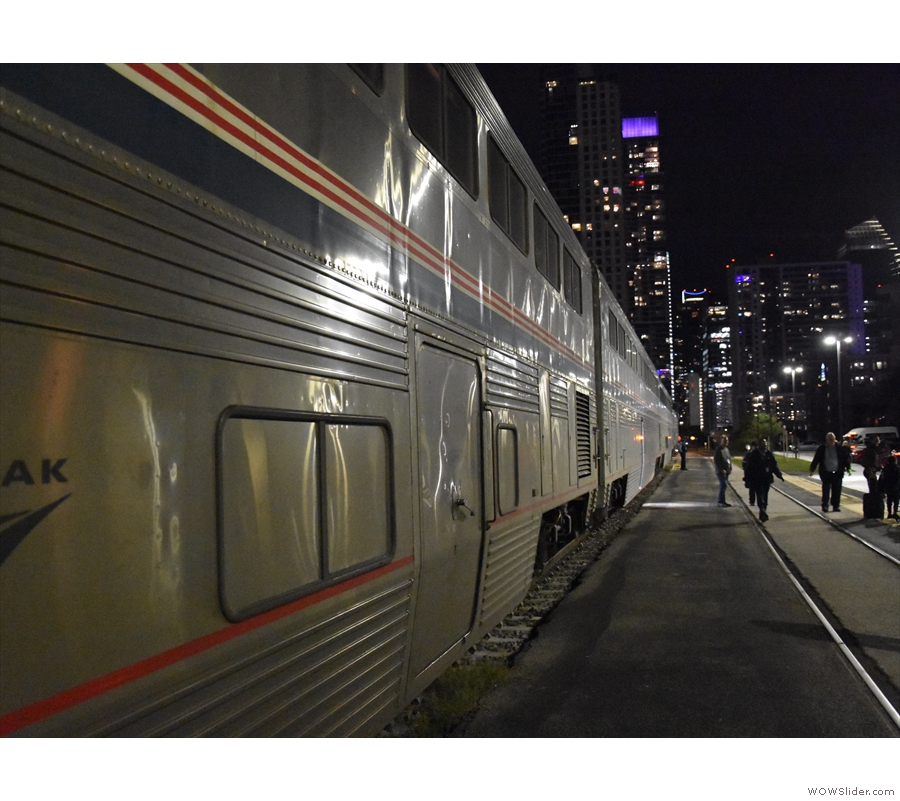
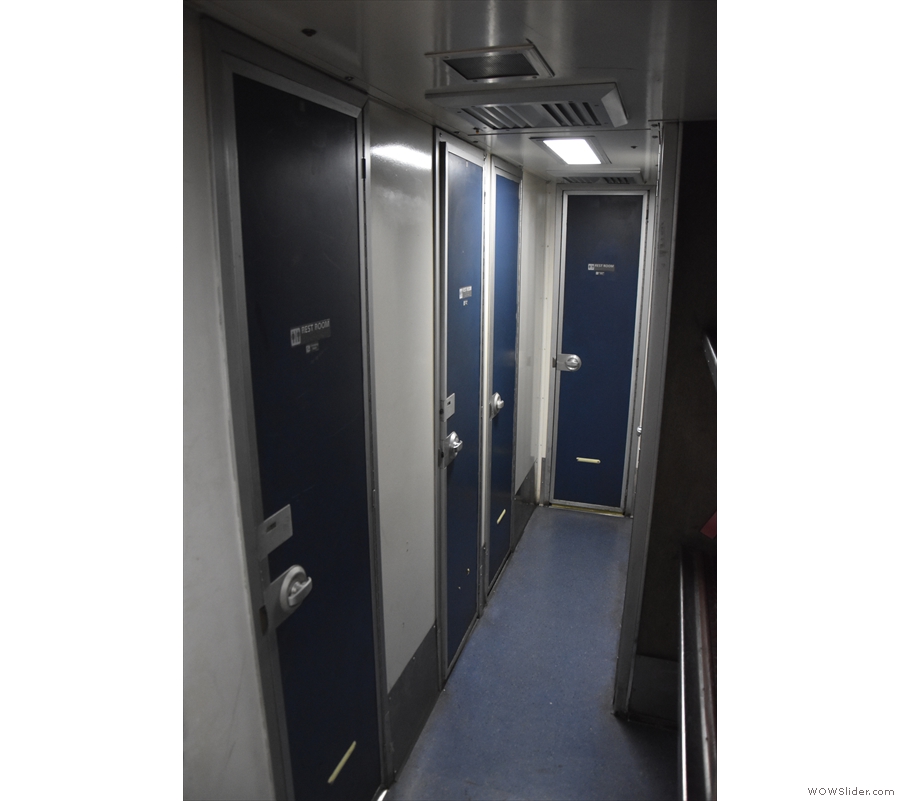
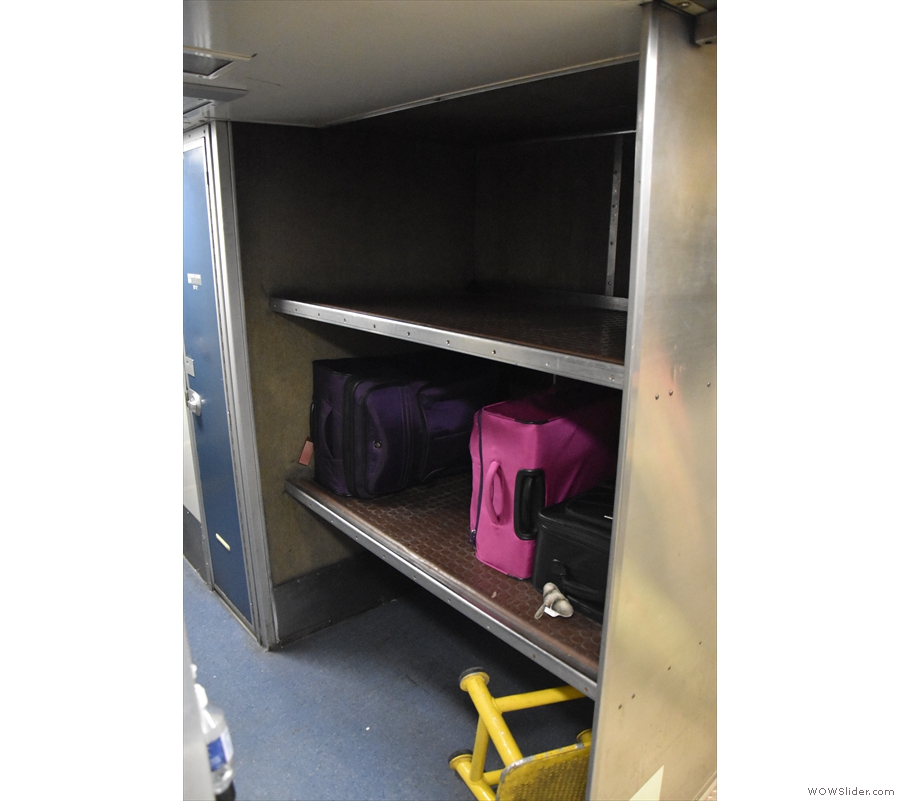
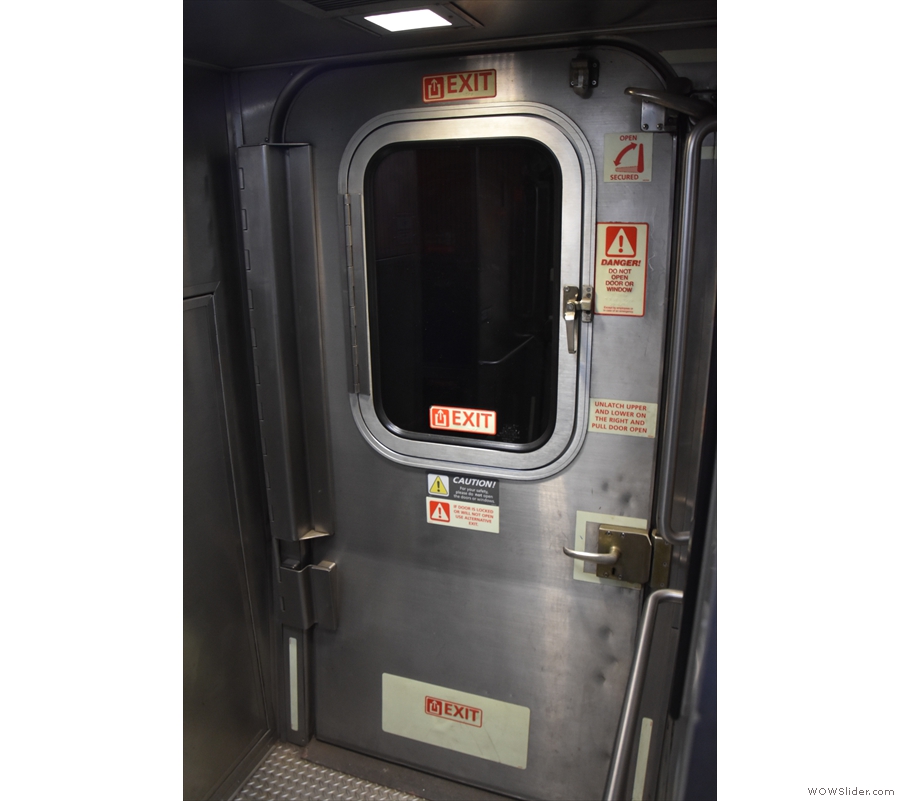
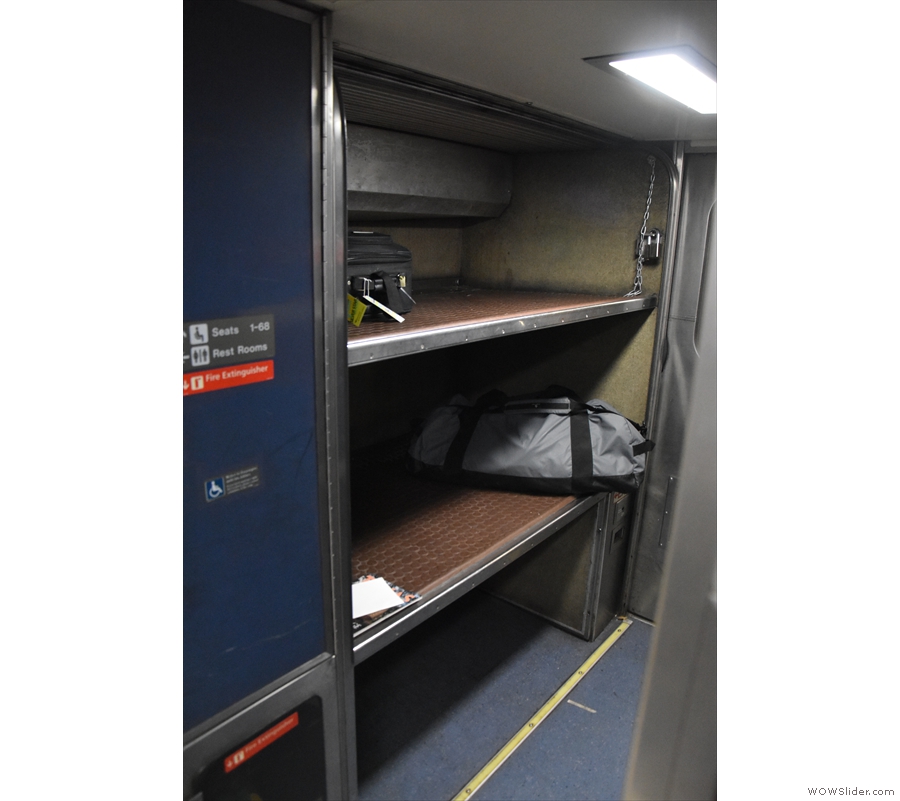
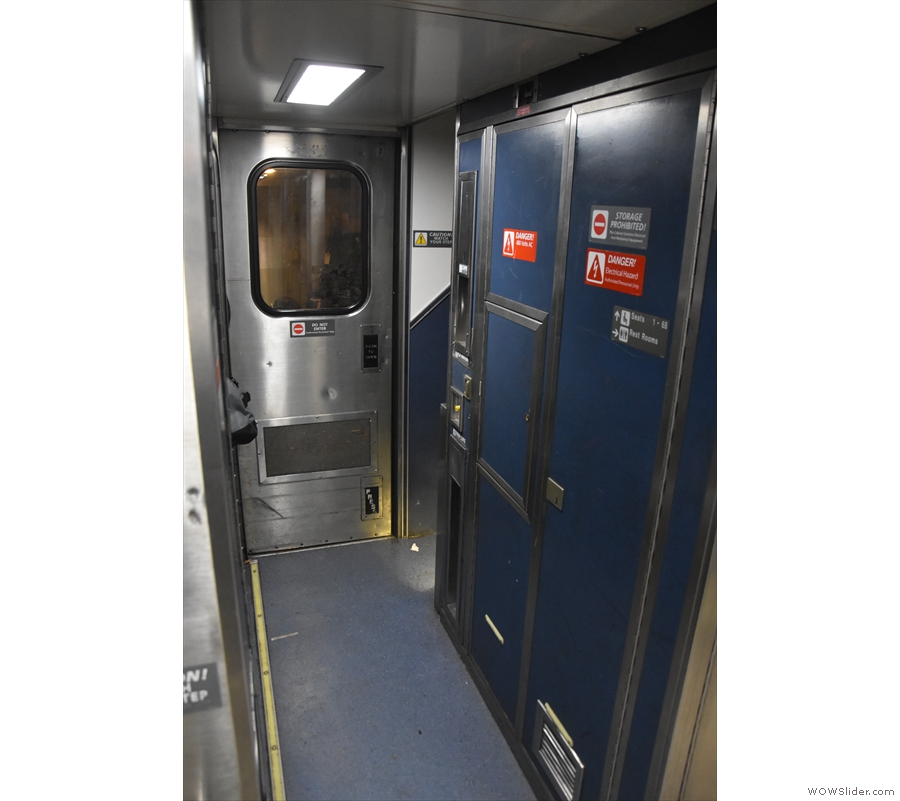
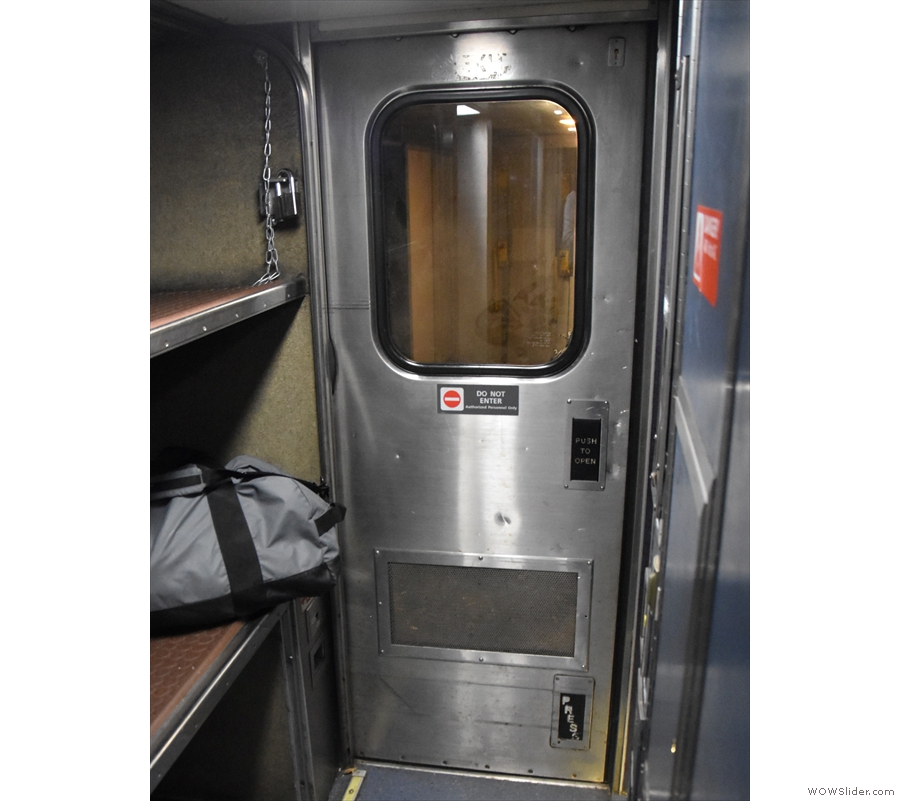
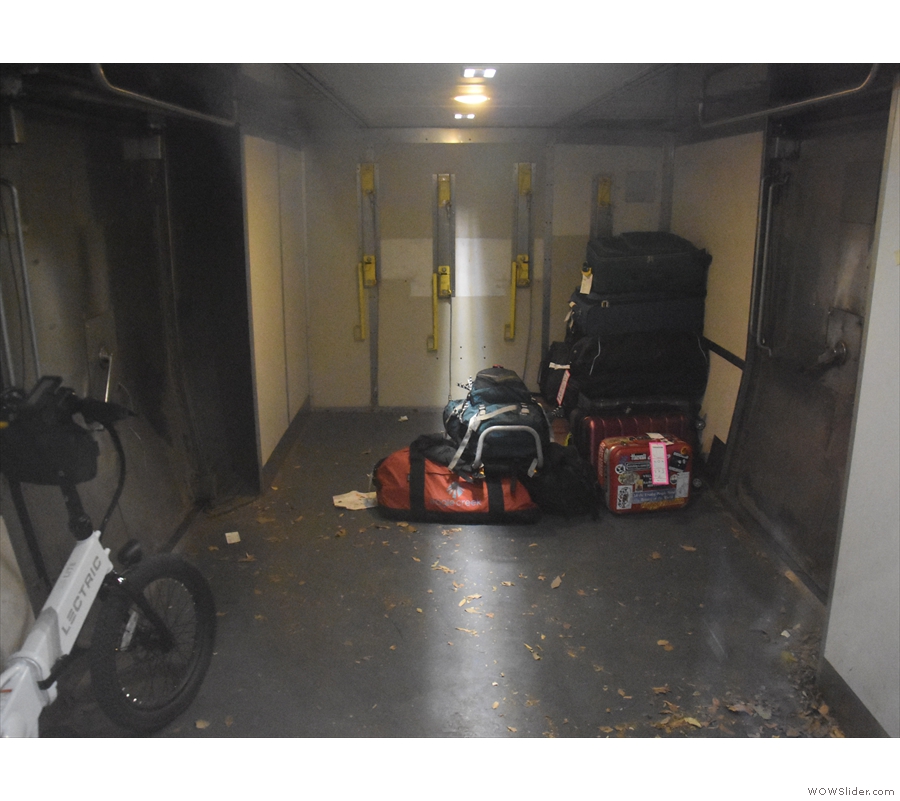
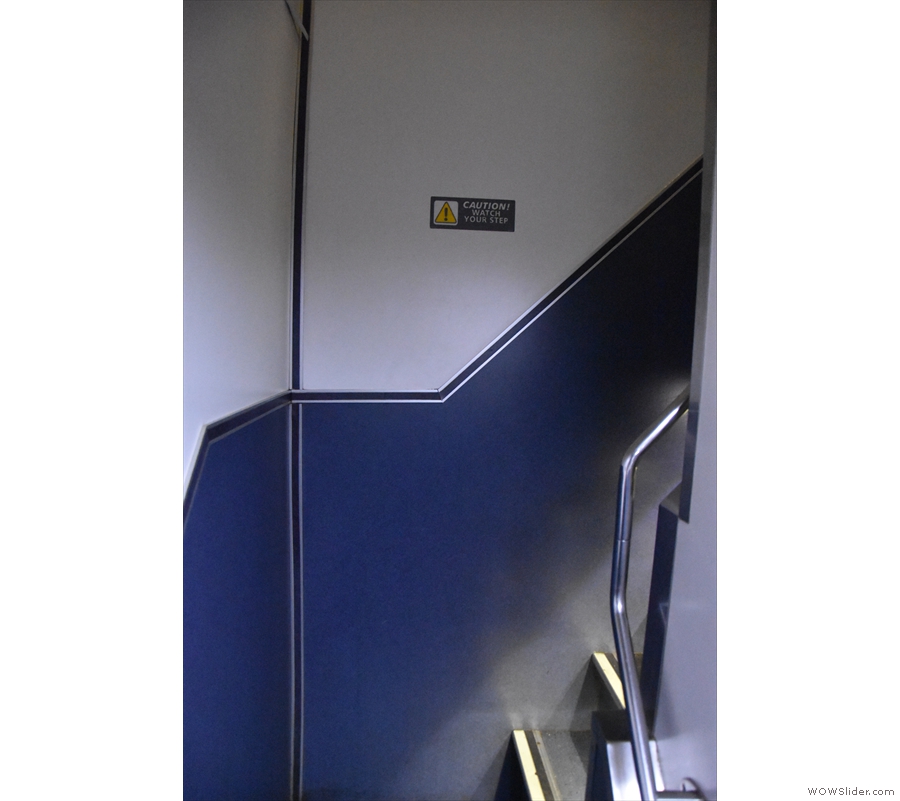
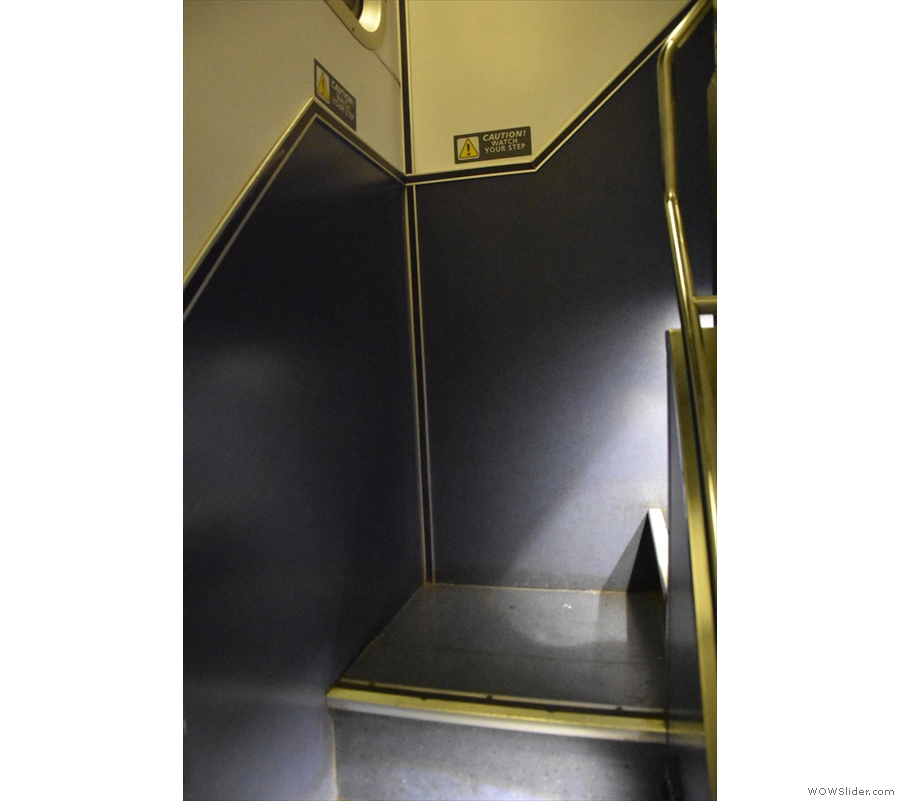
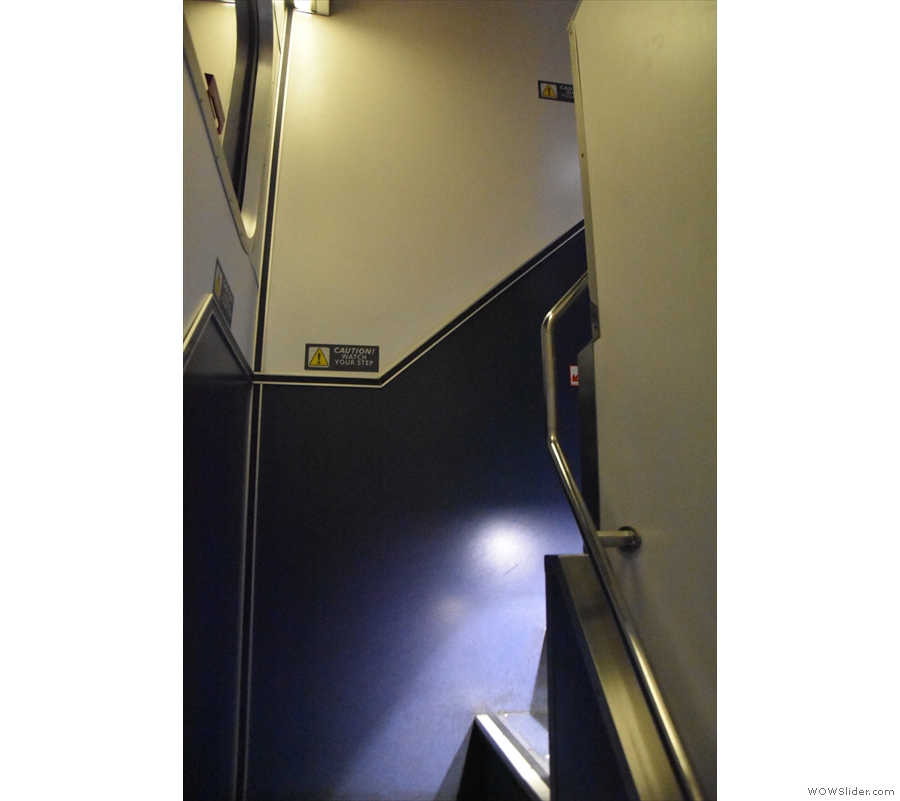
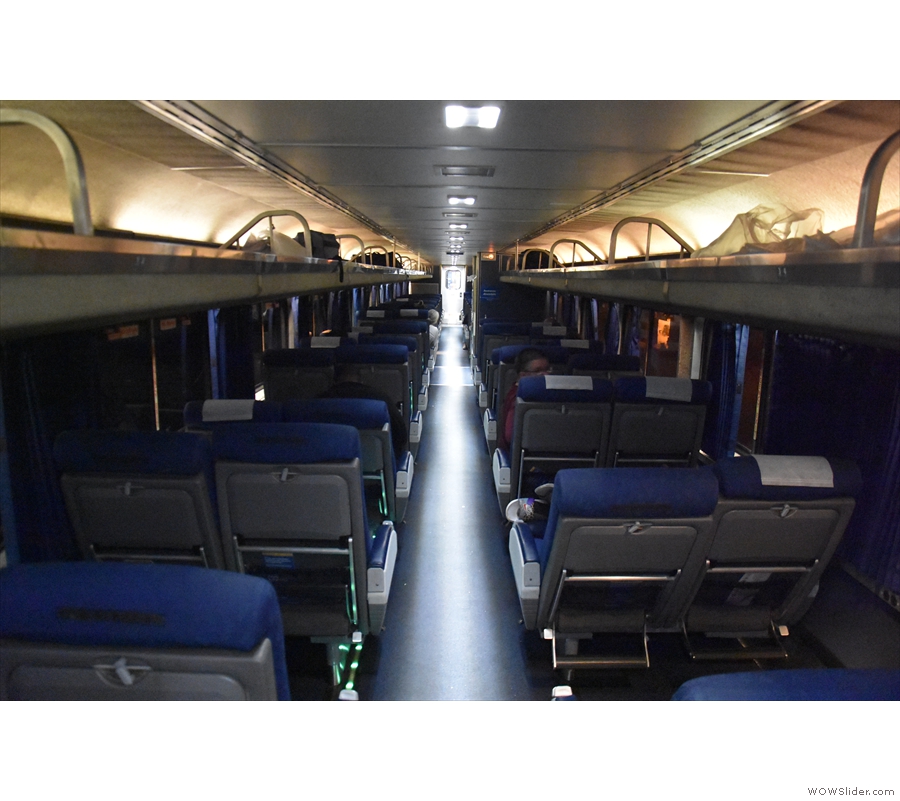

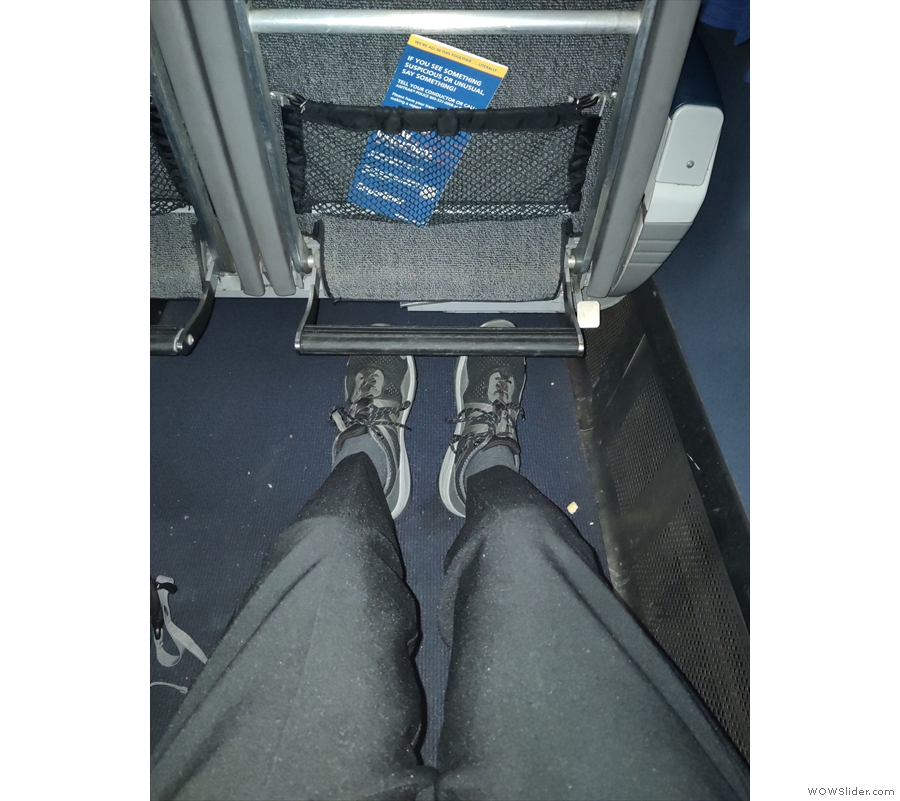
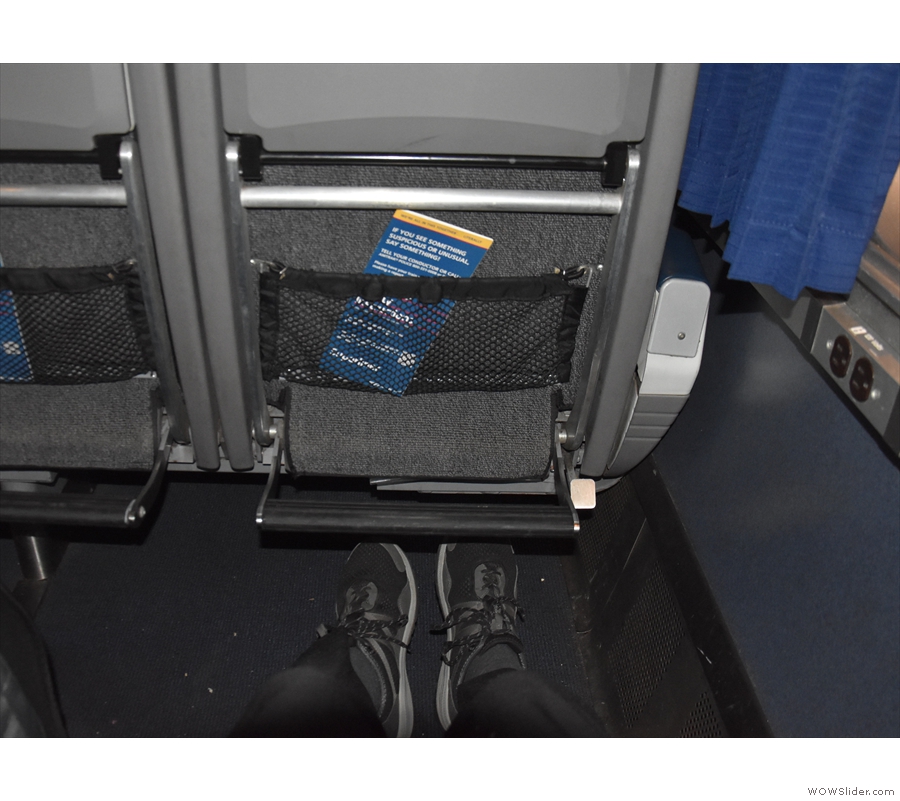
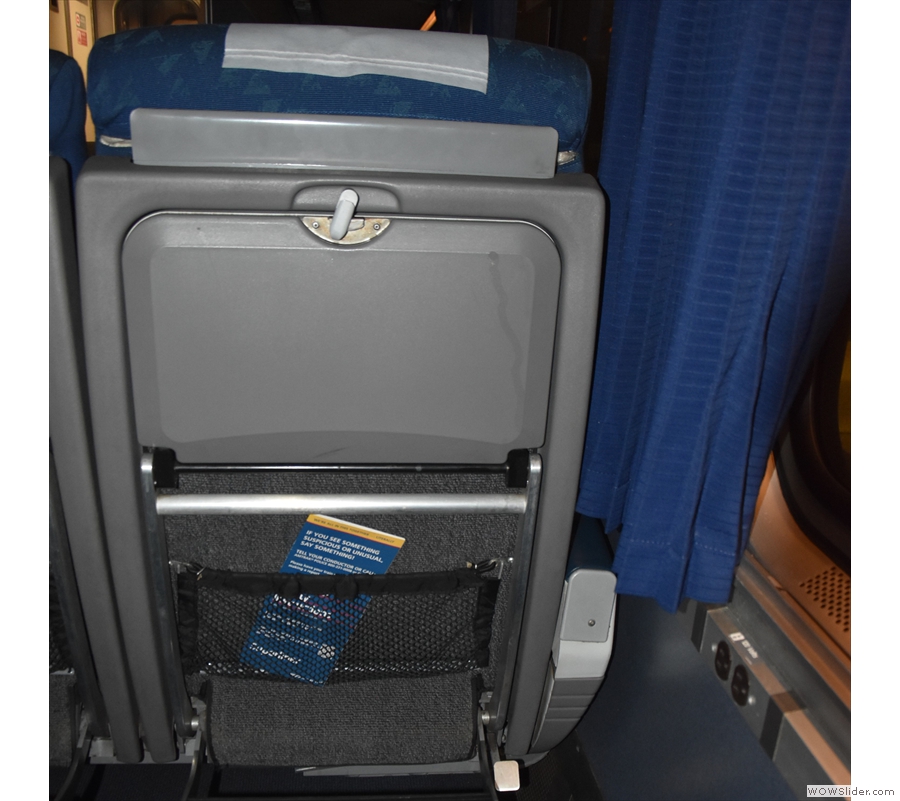
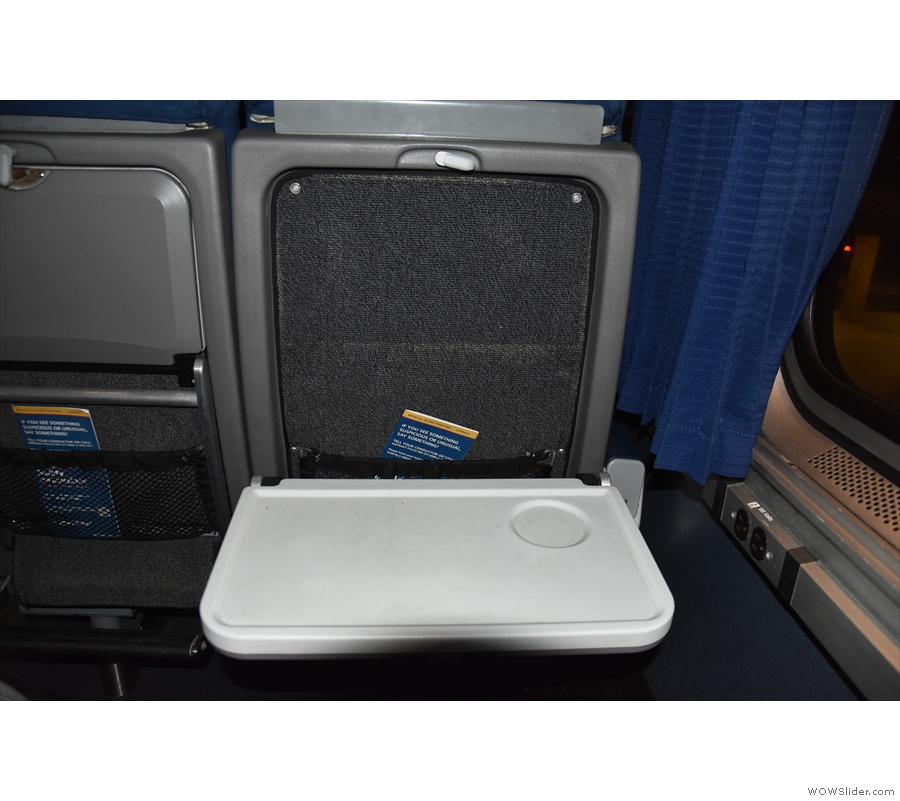
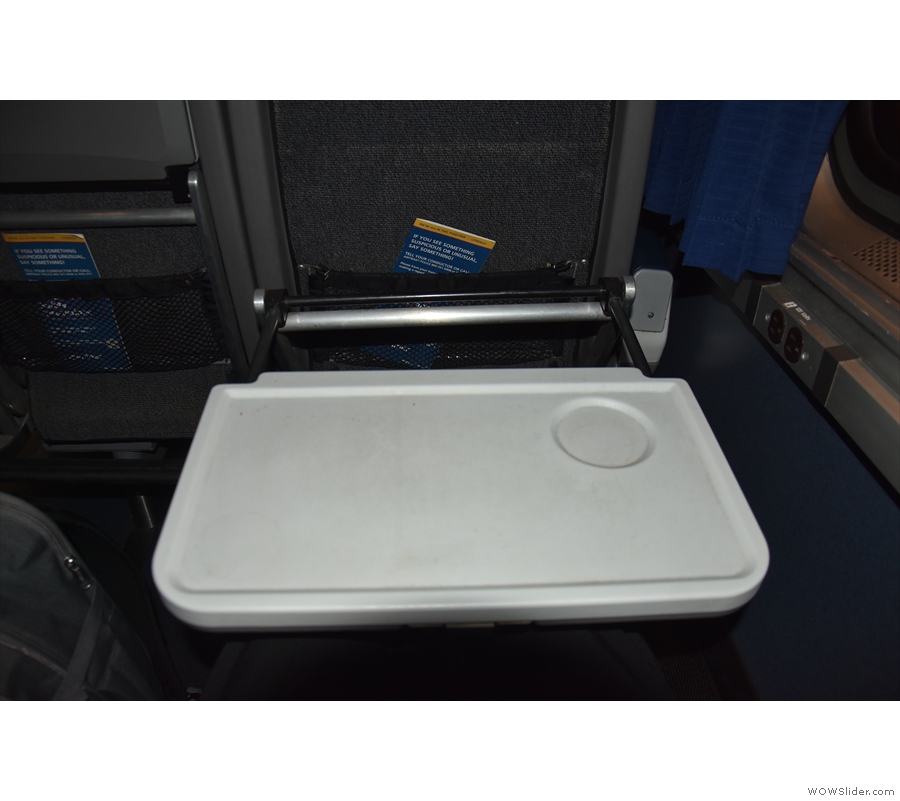
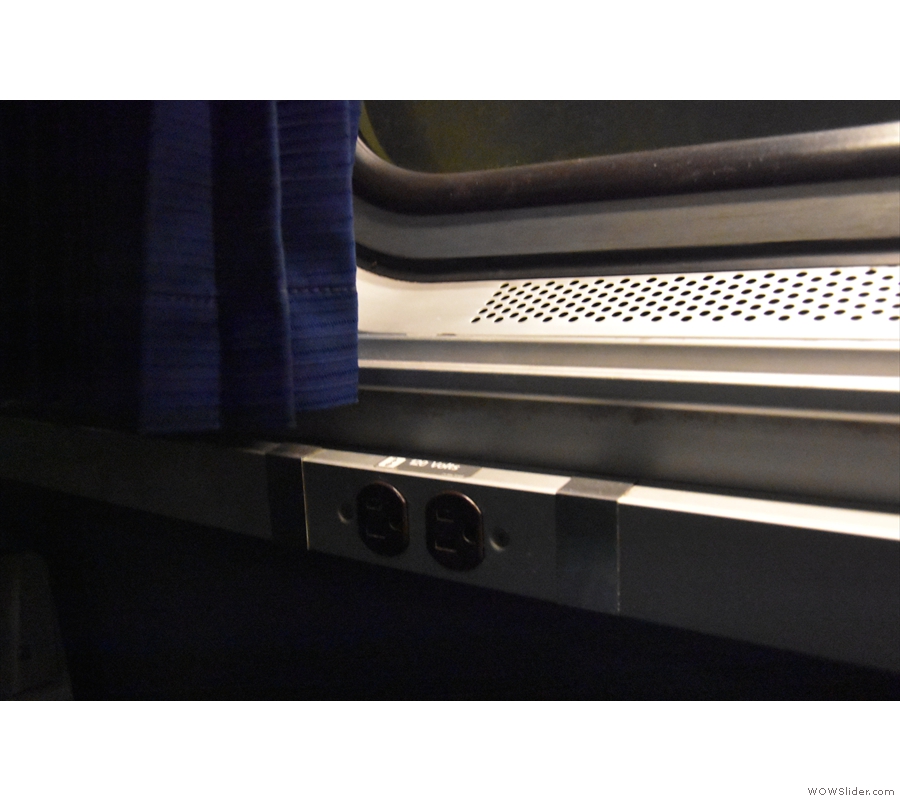
 1
1 2
2 3
3 4
4 5
5 6
6 7
7 8
8 9
9 10
10 11
11 12
12 13
13 14
14 15
15 16
16 17
17 18
18 19
19 20
20 21
21 22
22

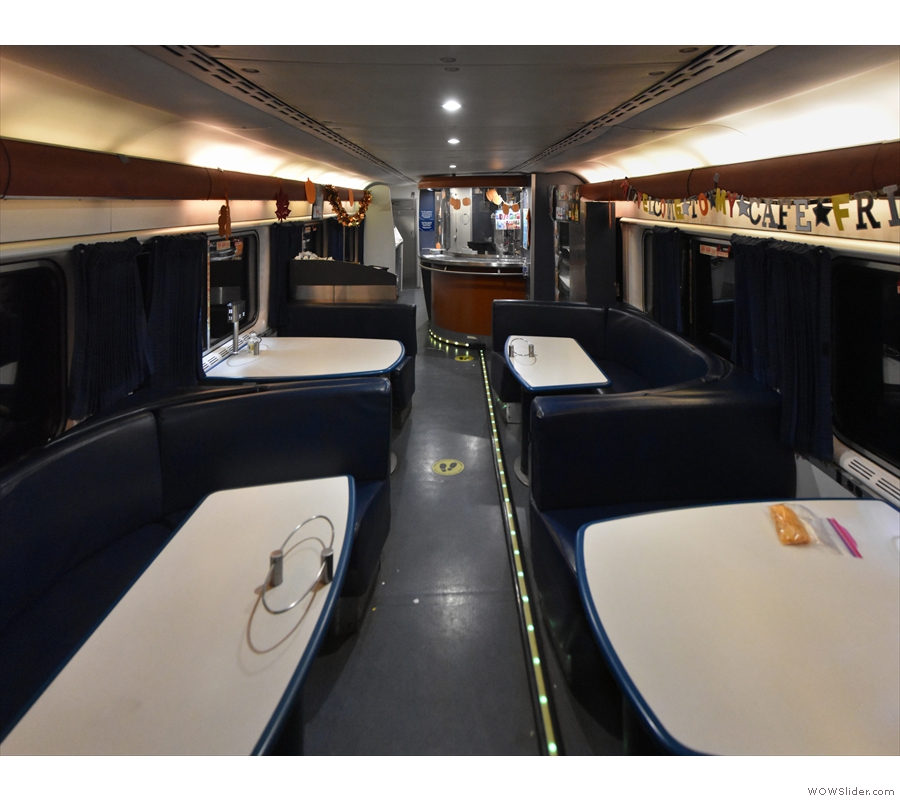
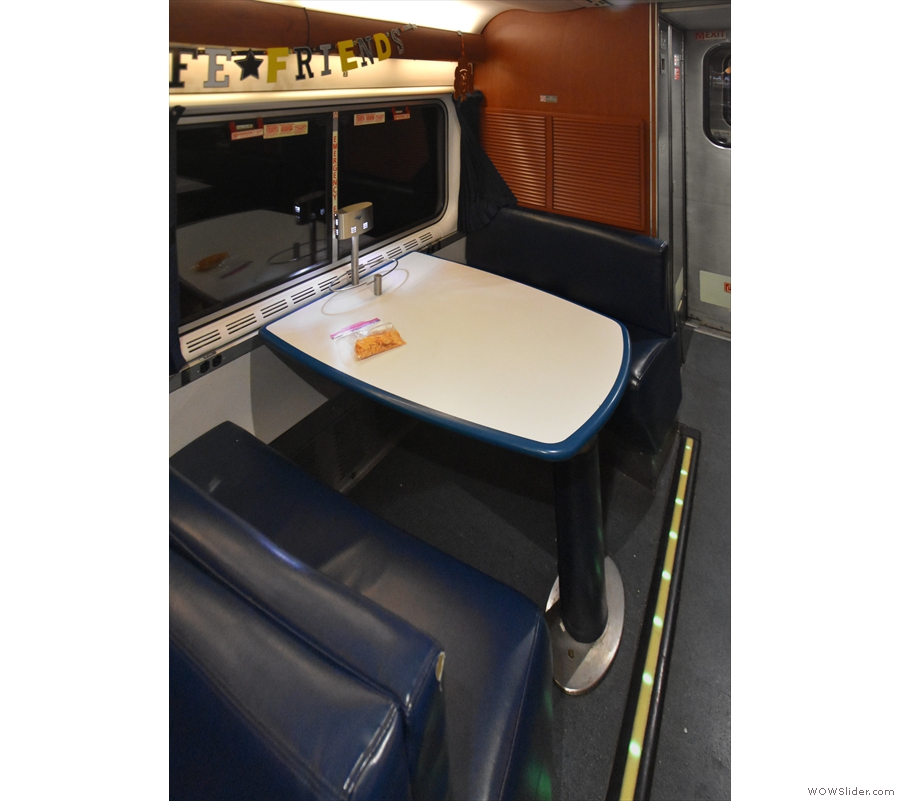
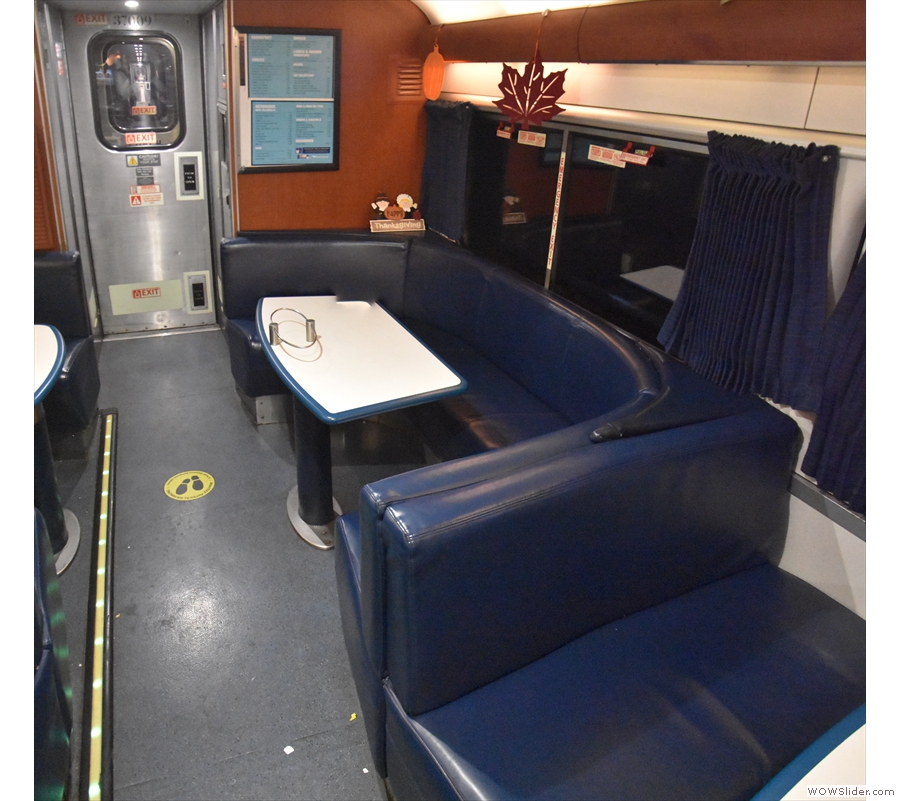
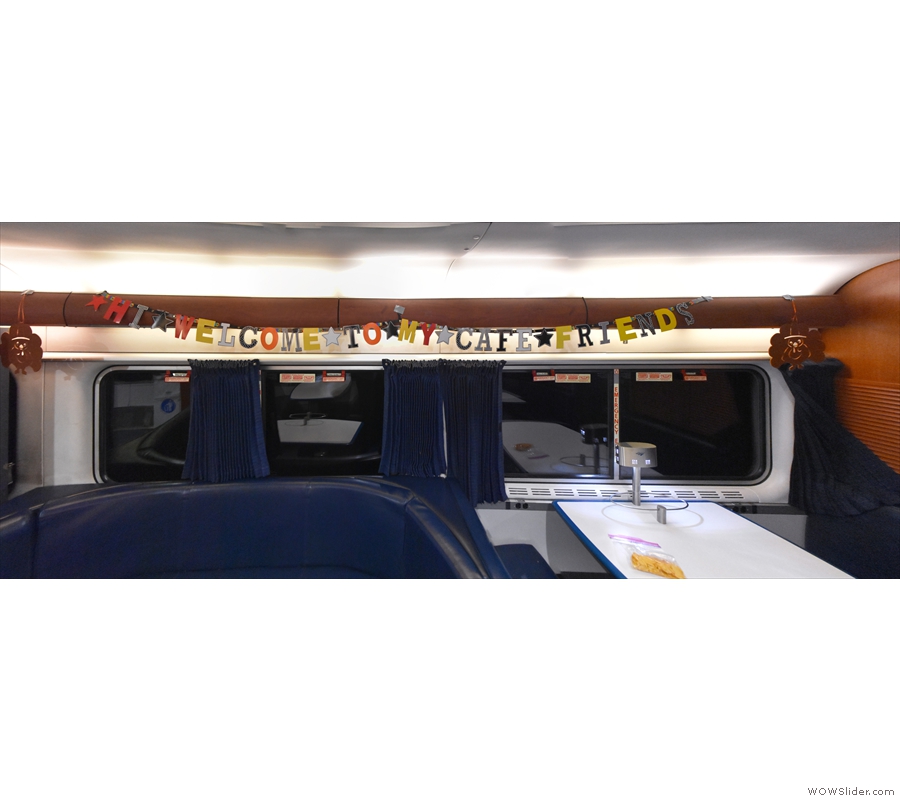

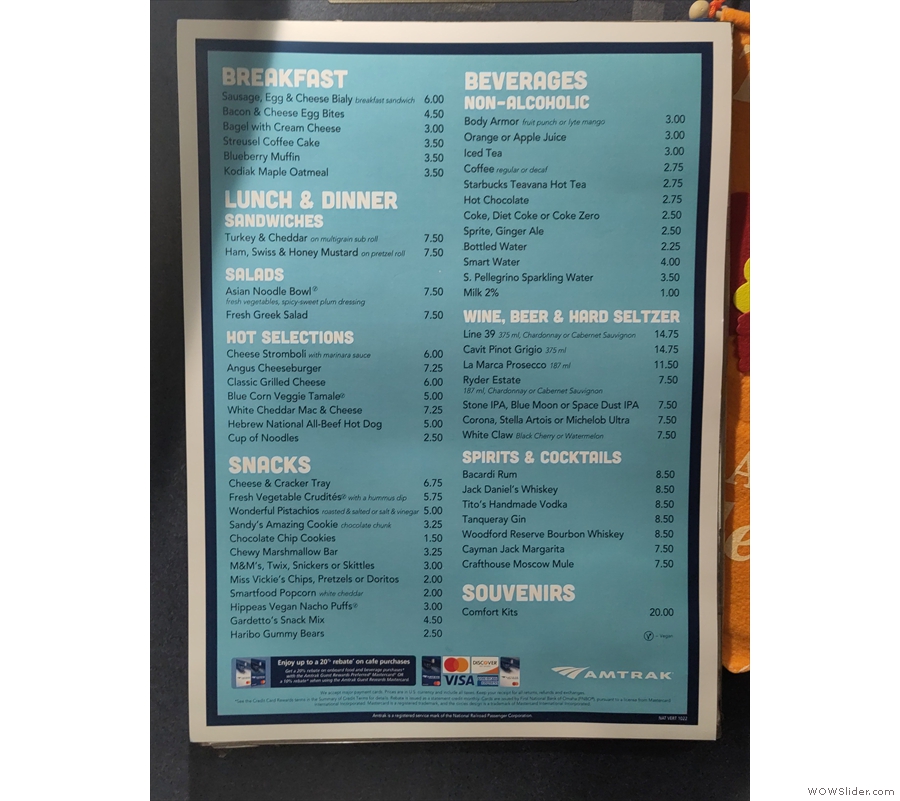
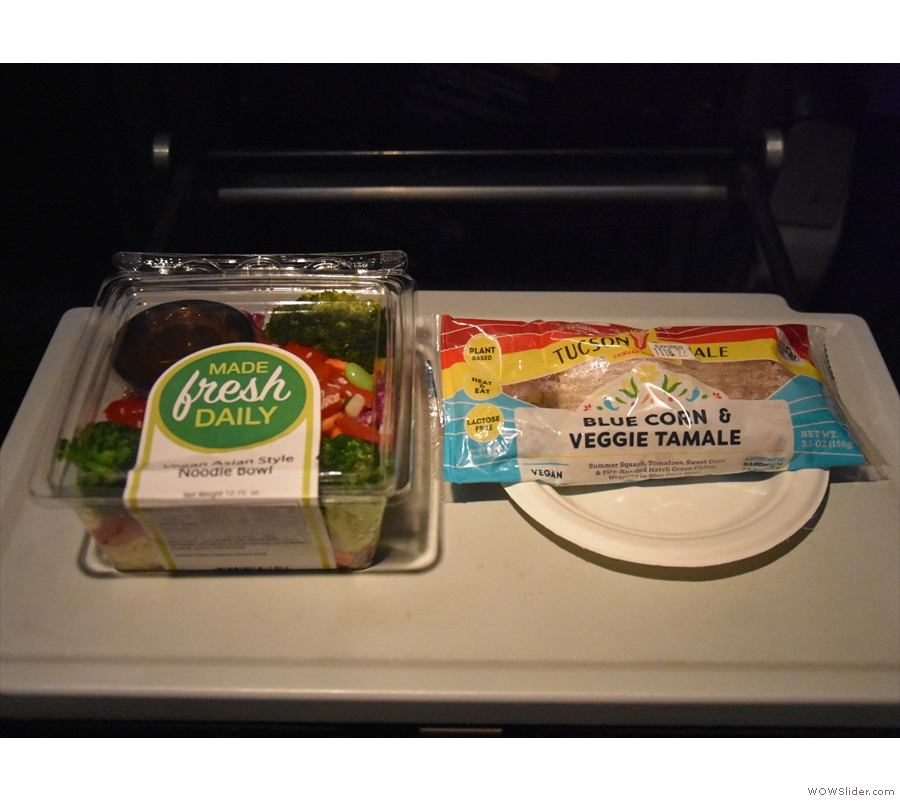
 1
1 2
2 3
3 4
4 5
5 6
6 7
7 8
8 9
9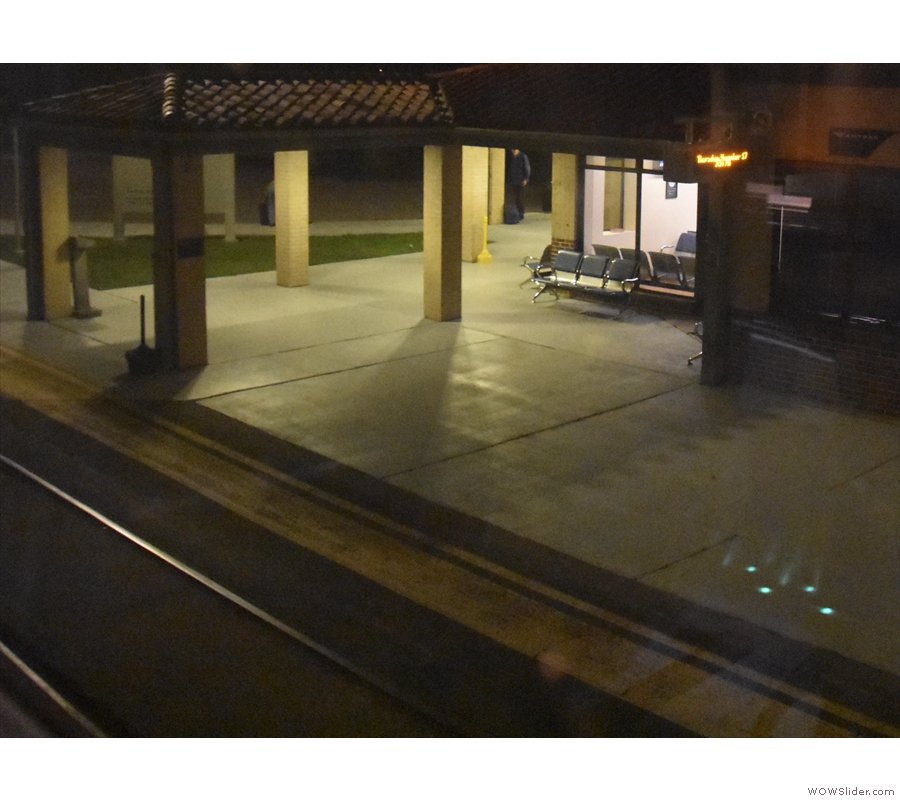
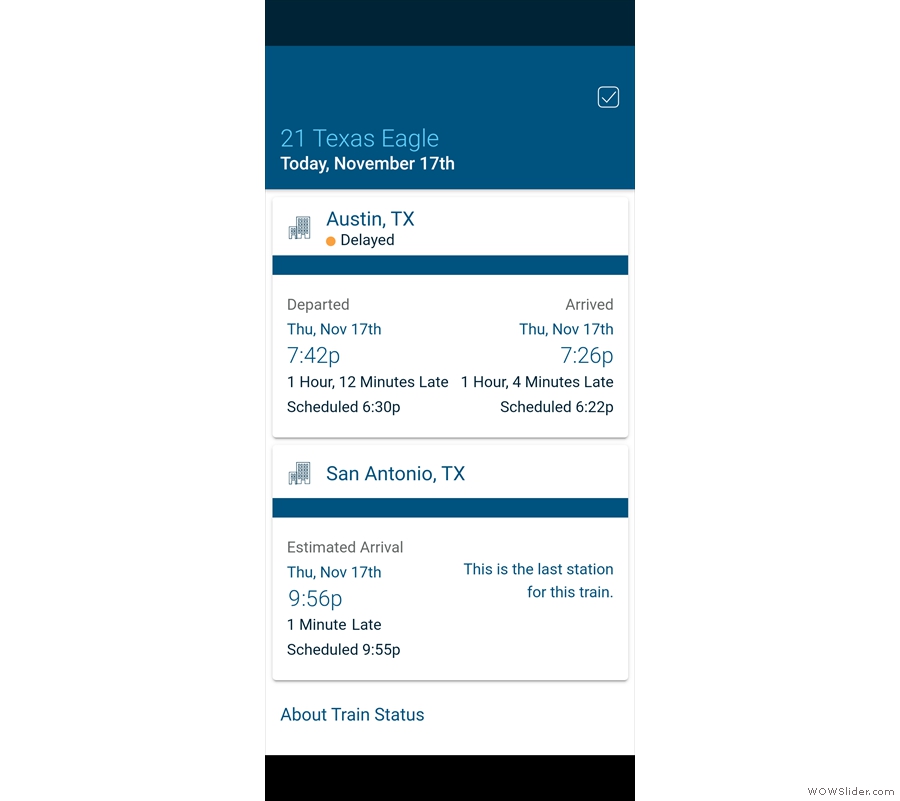
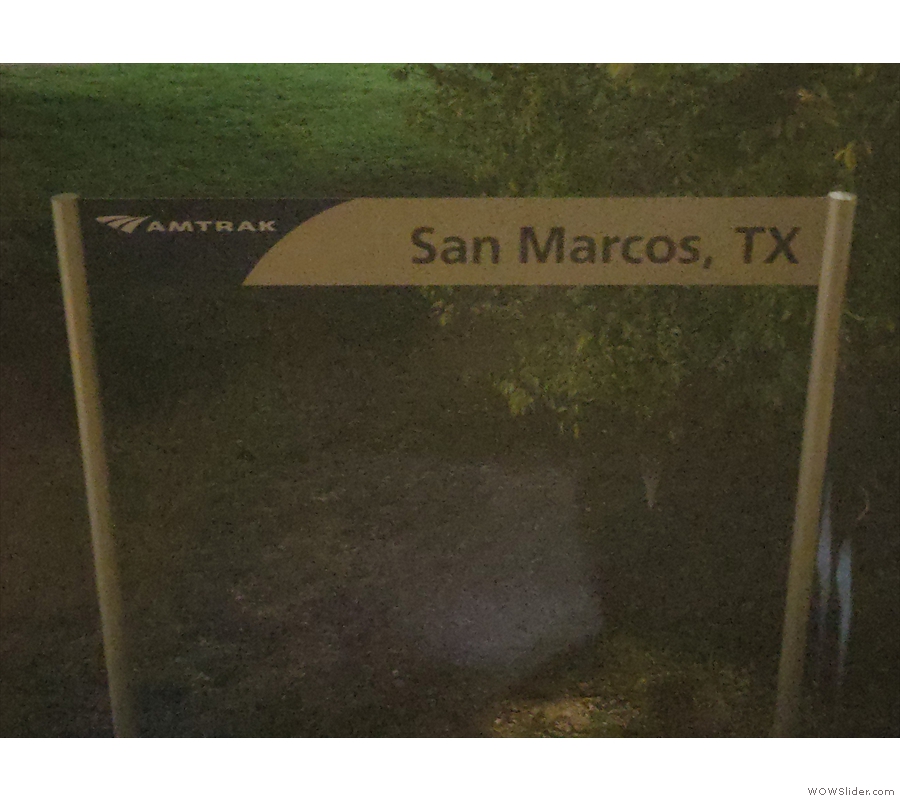
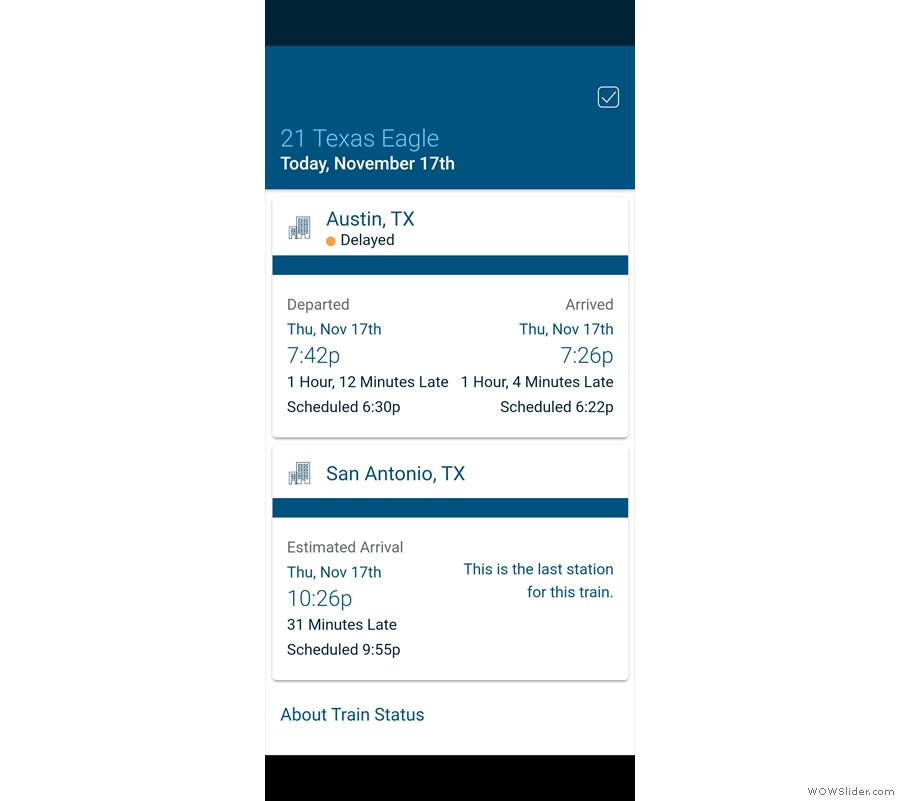
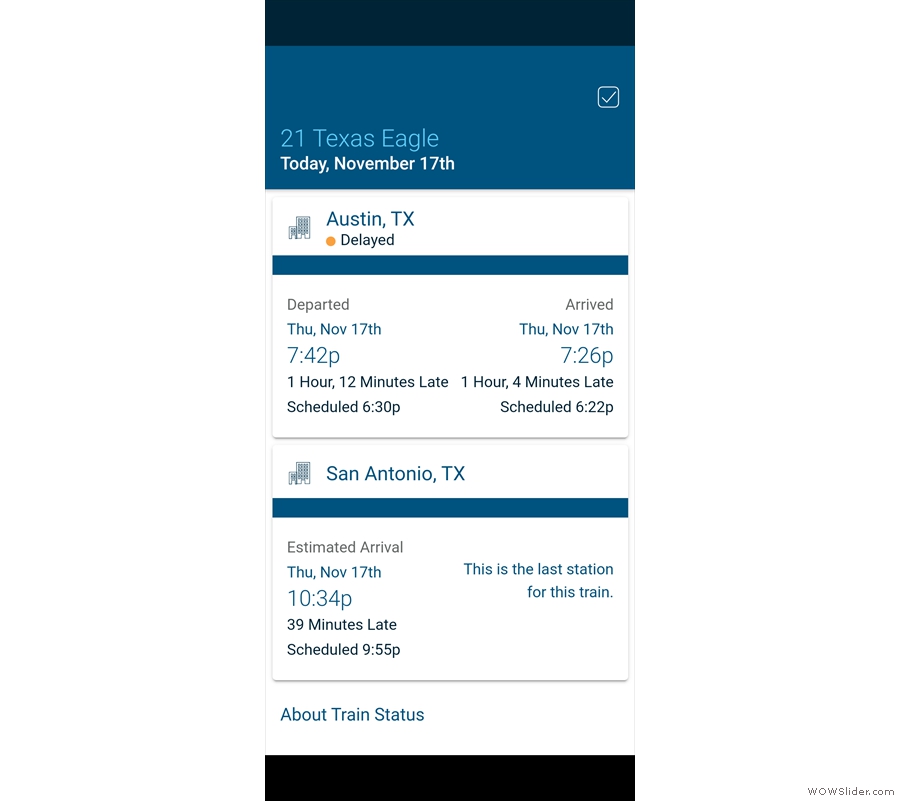

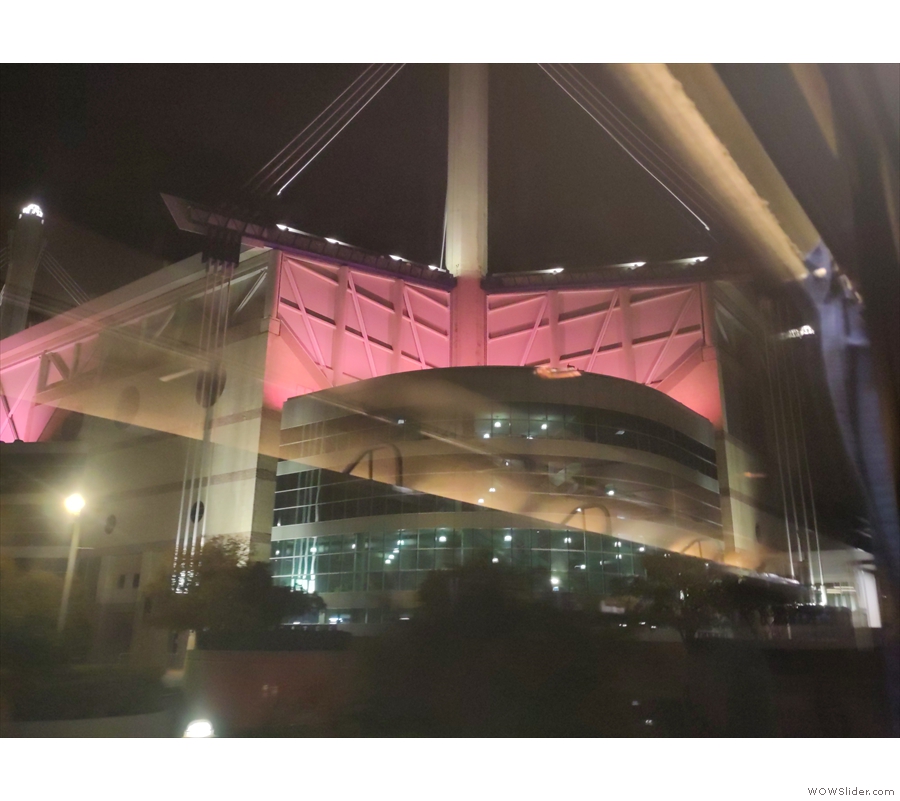
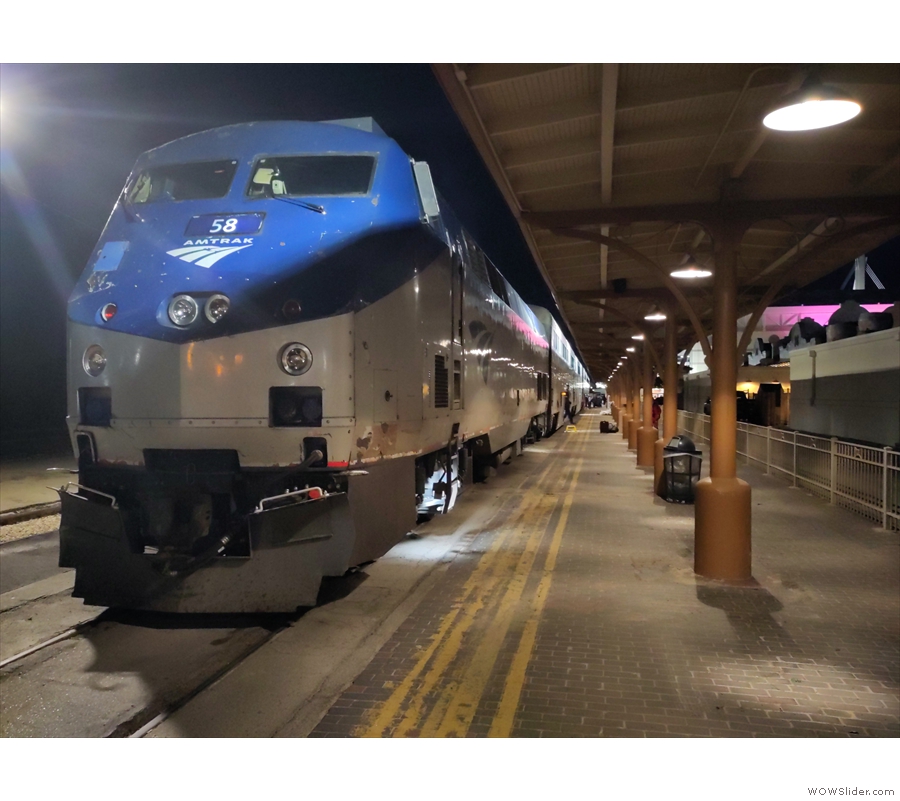
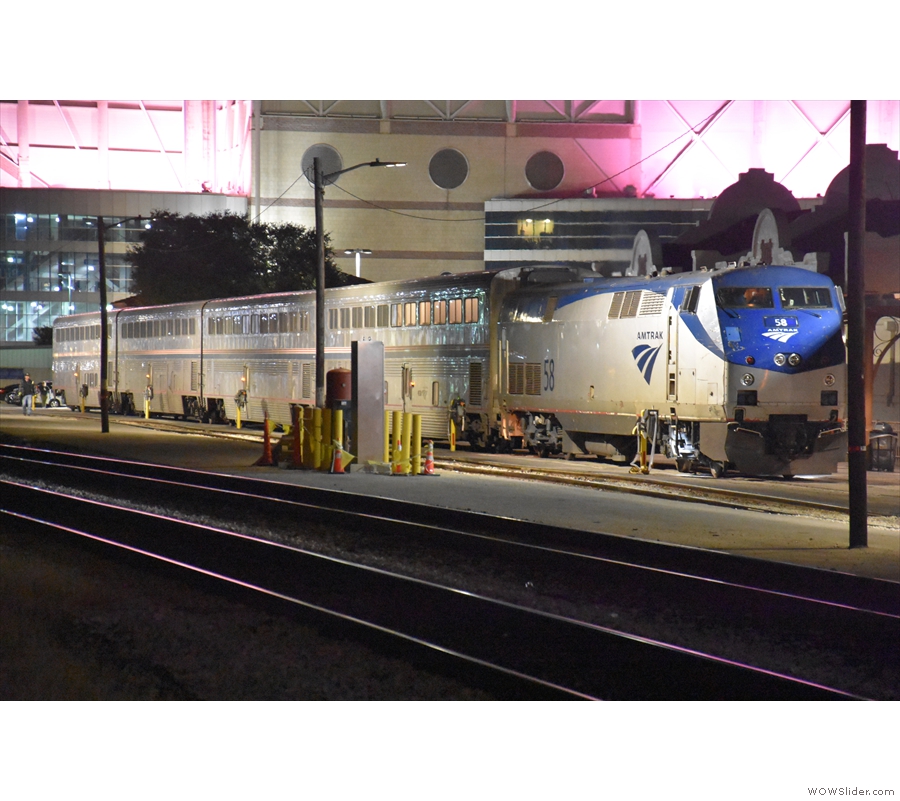
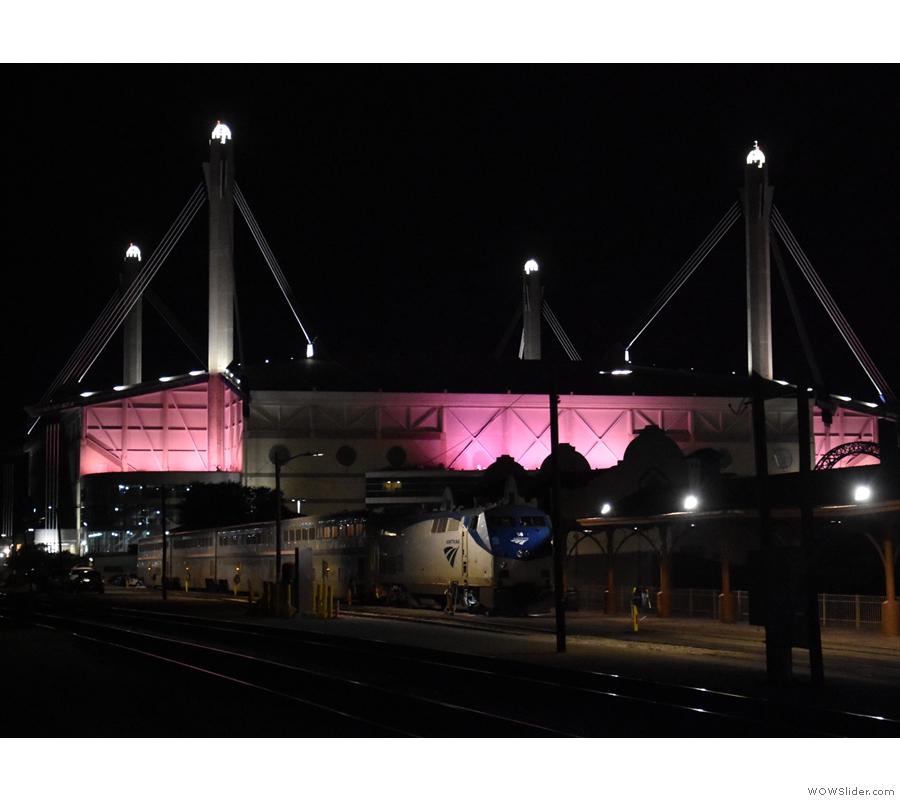
 1
1 2
2 3
3 4
4 5
5 6
6 7
7 8
8 9
9 10
10
Pingback: Another Weekend in New Orleans | Brian's Coffee Spot